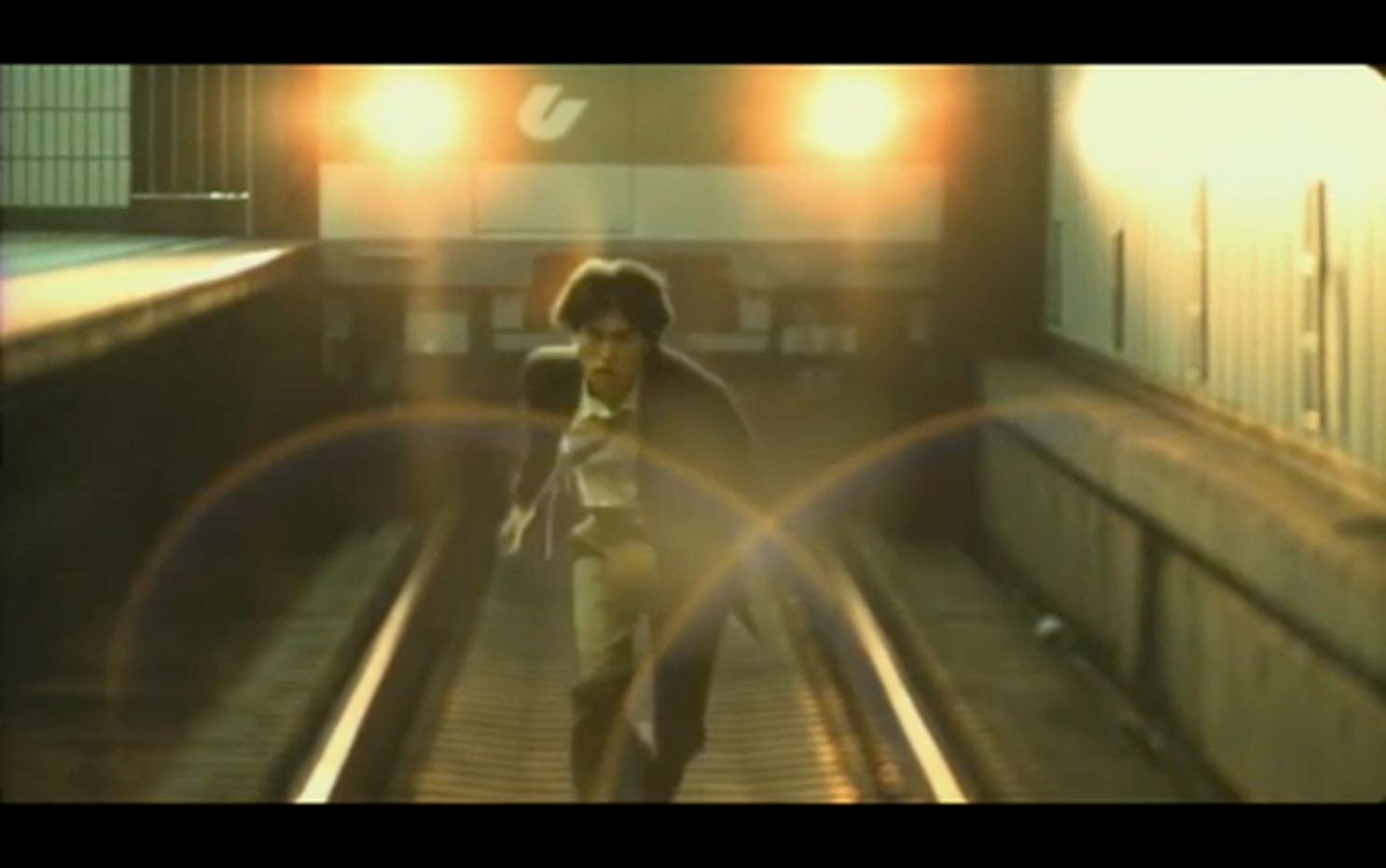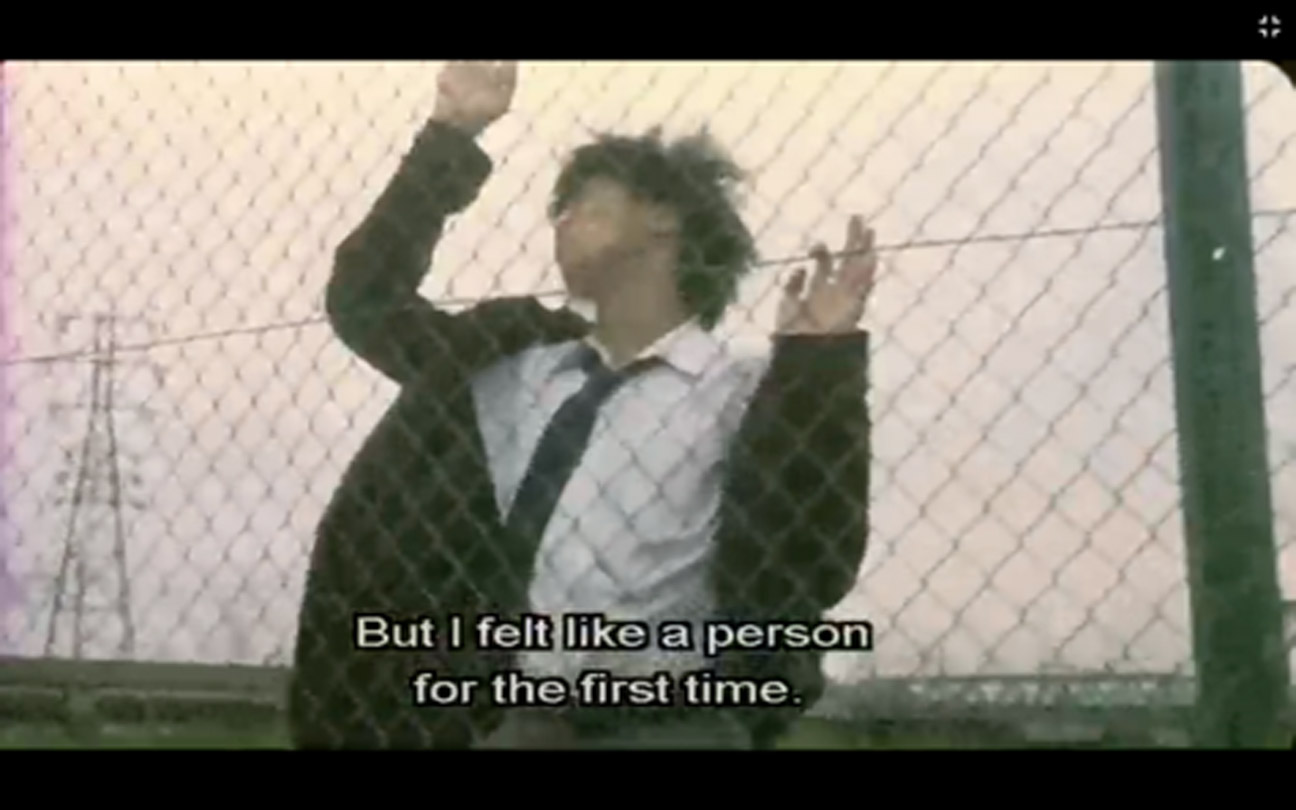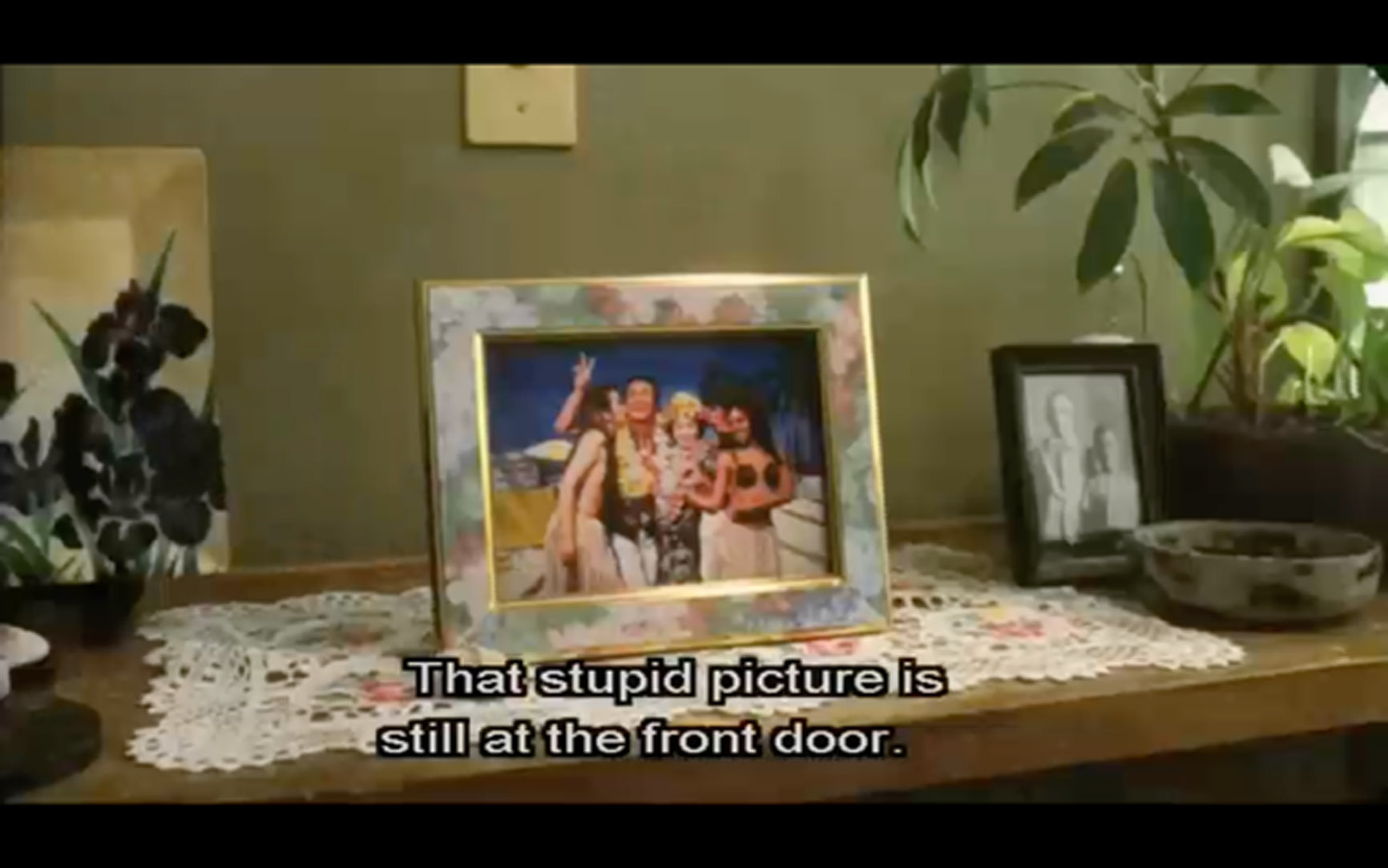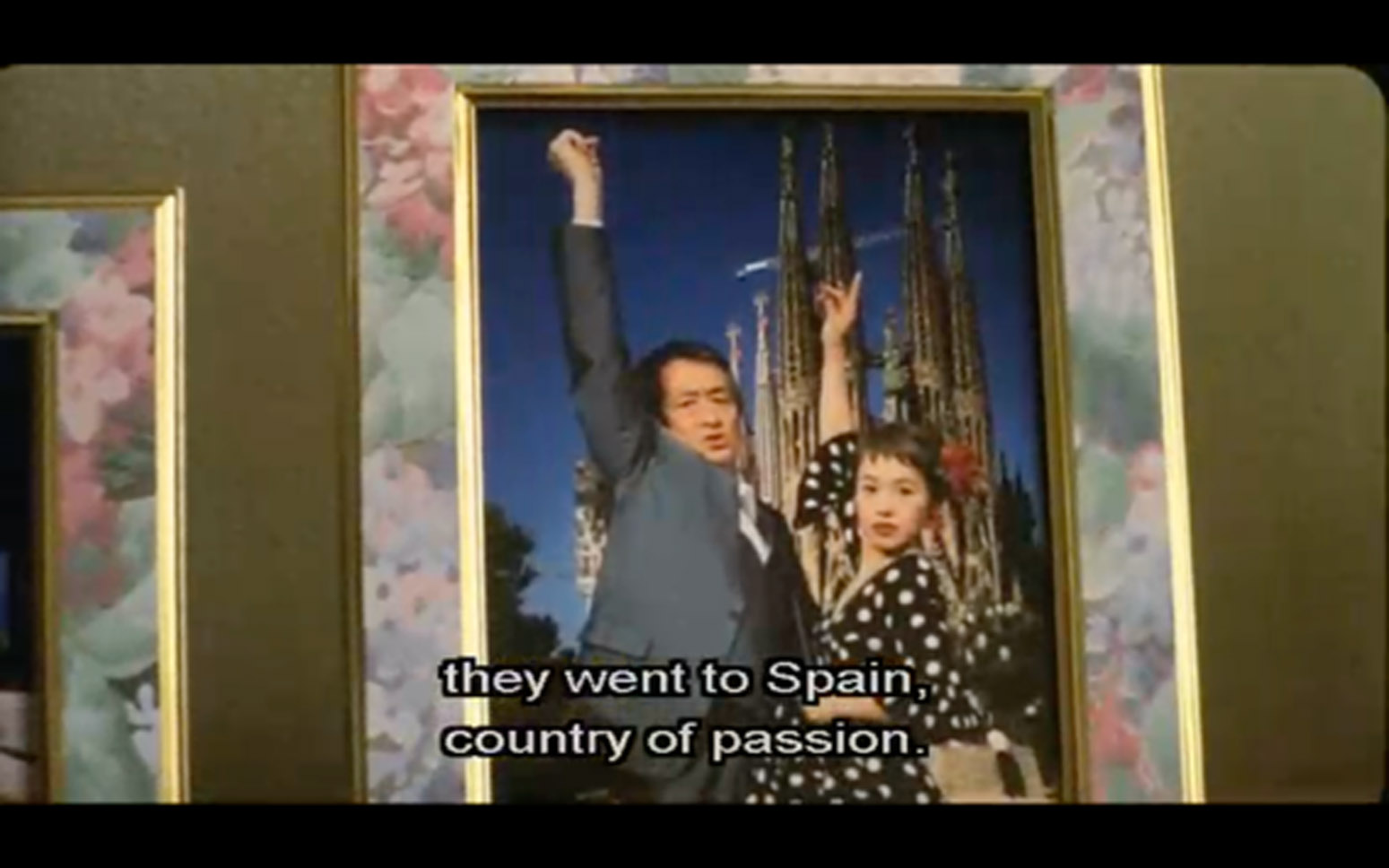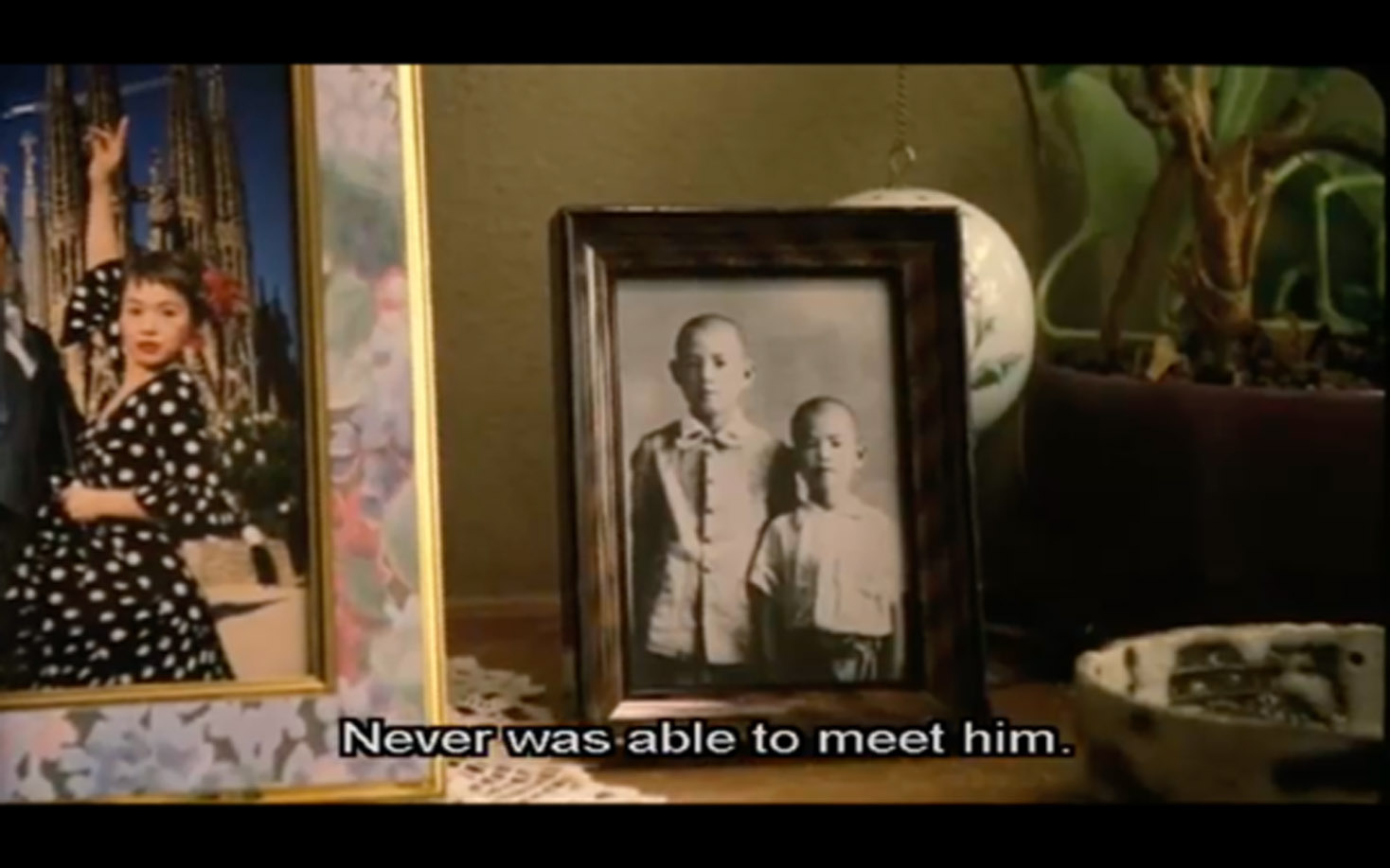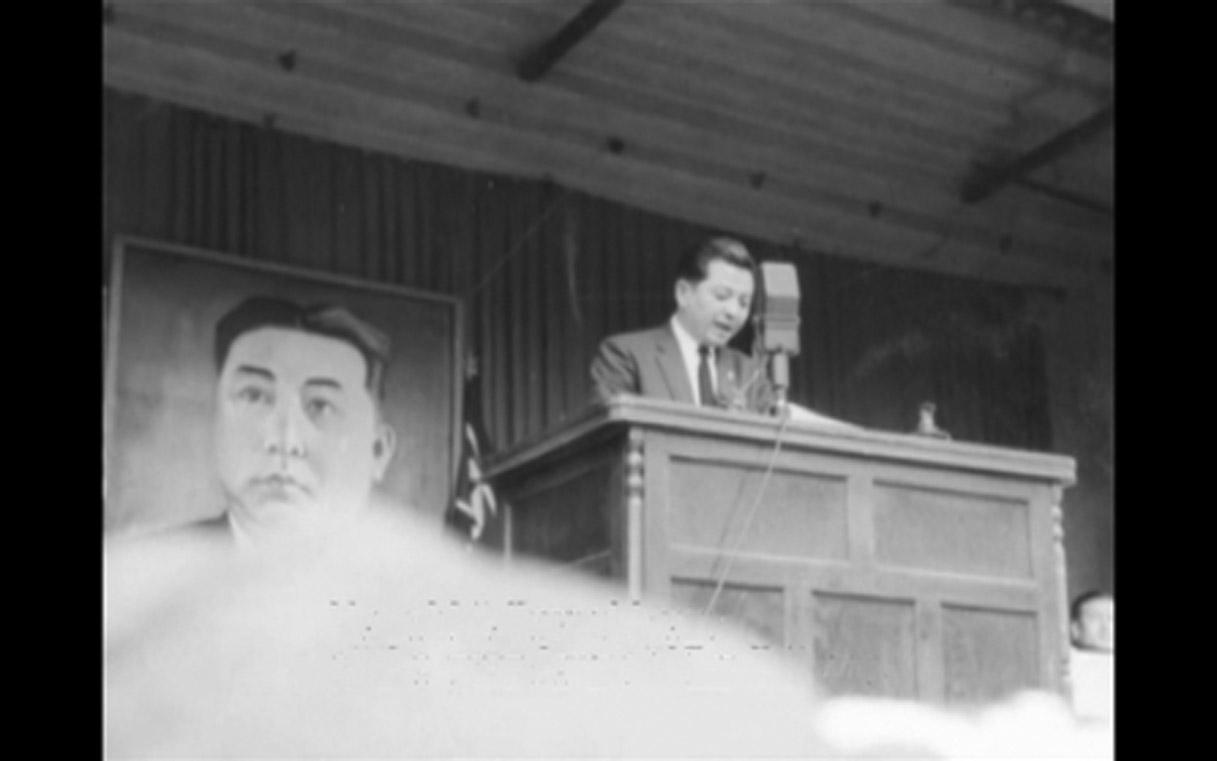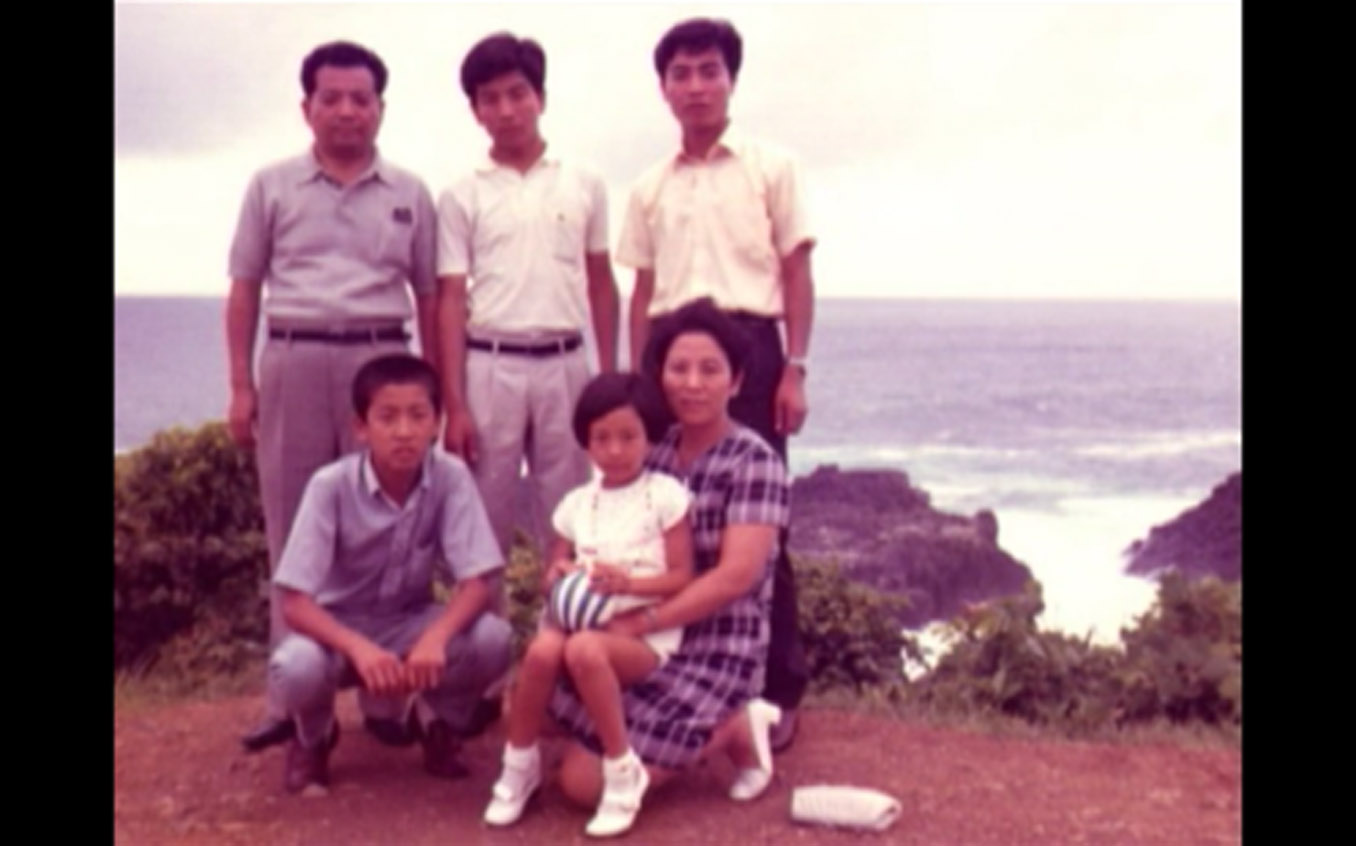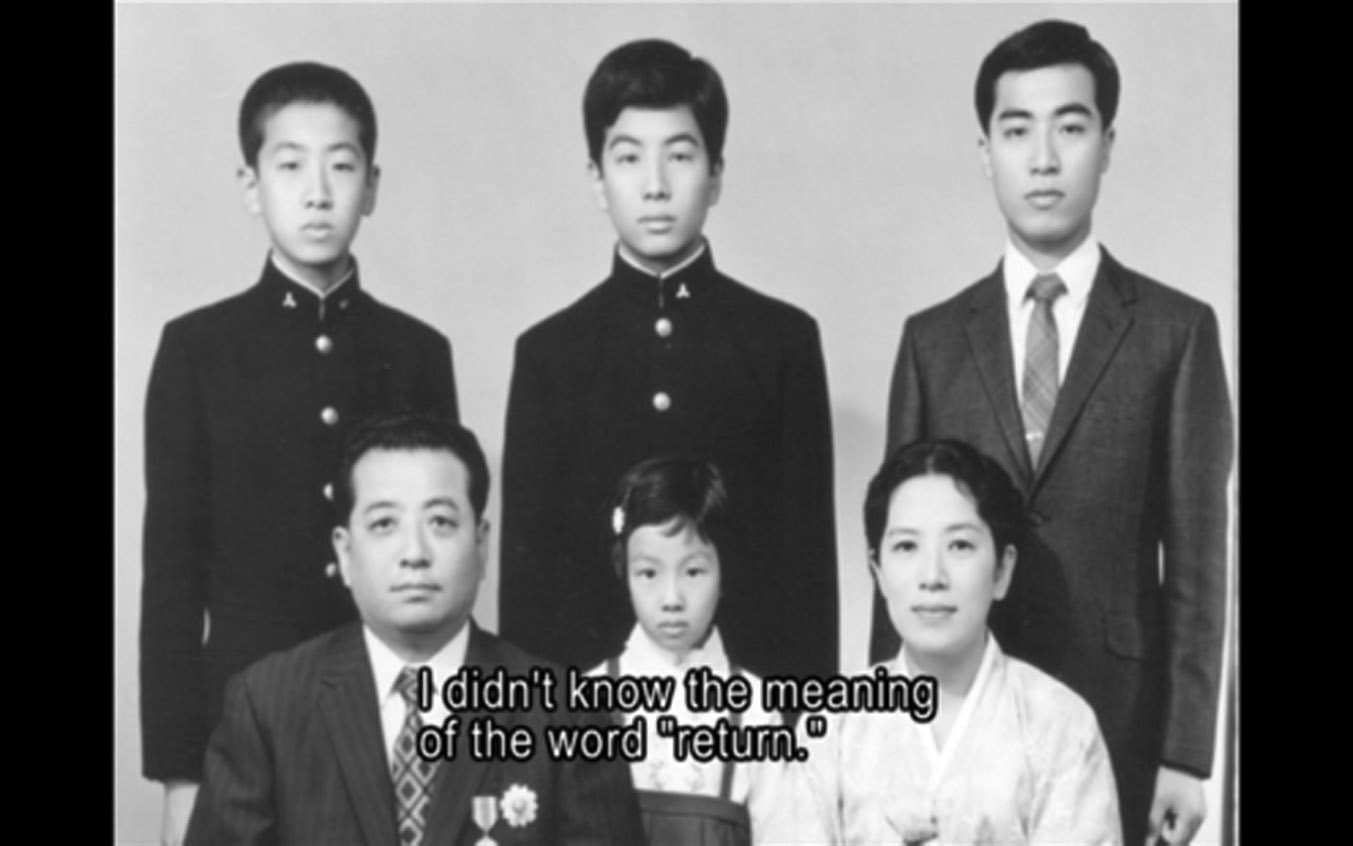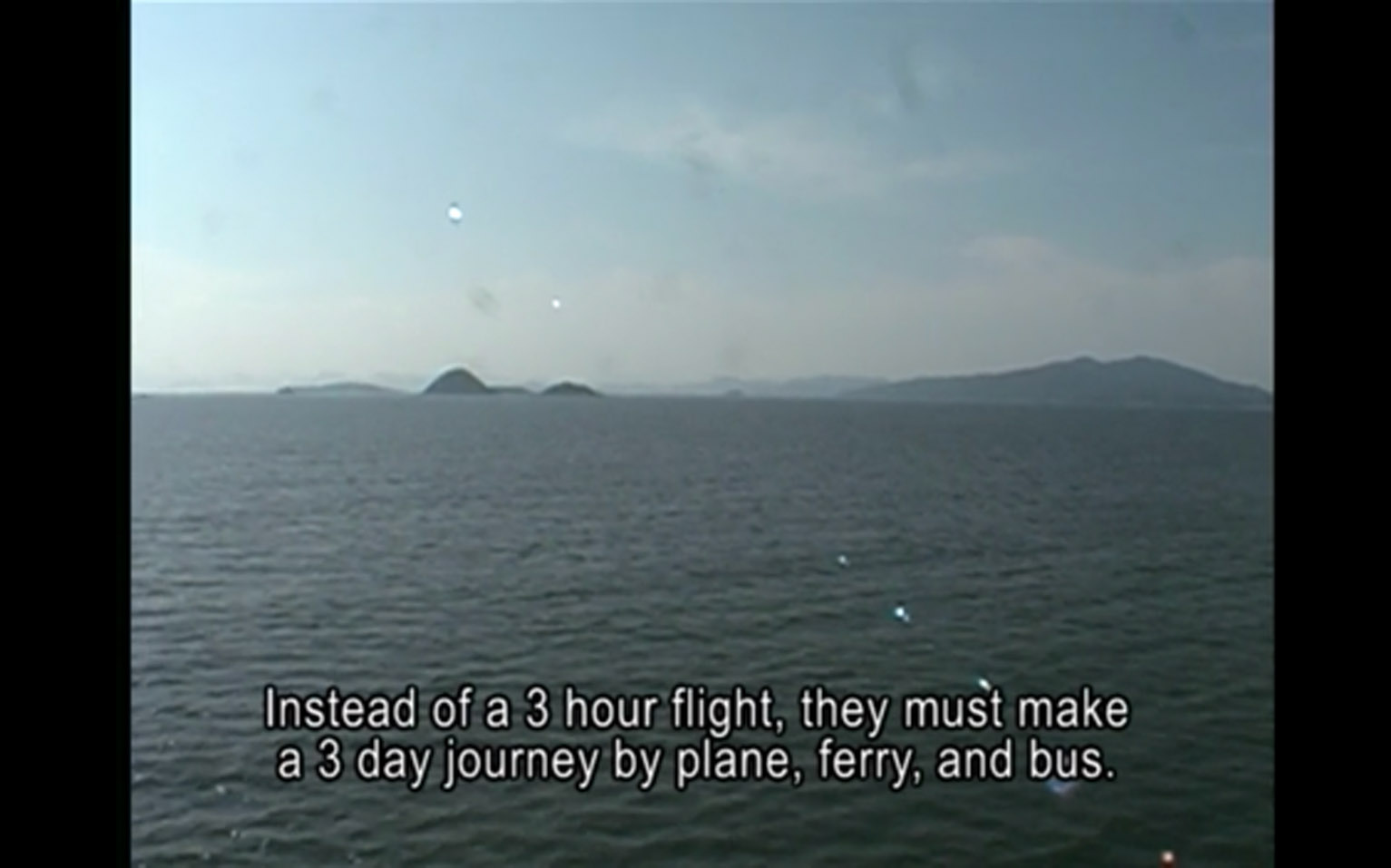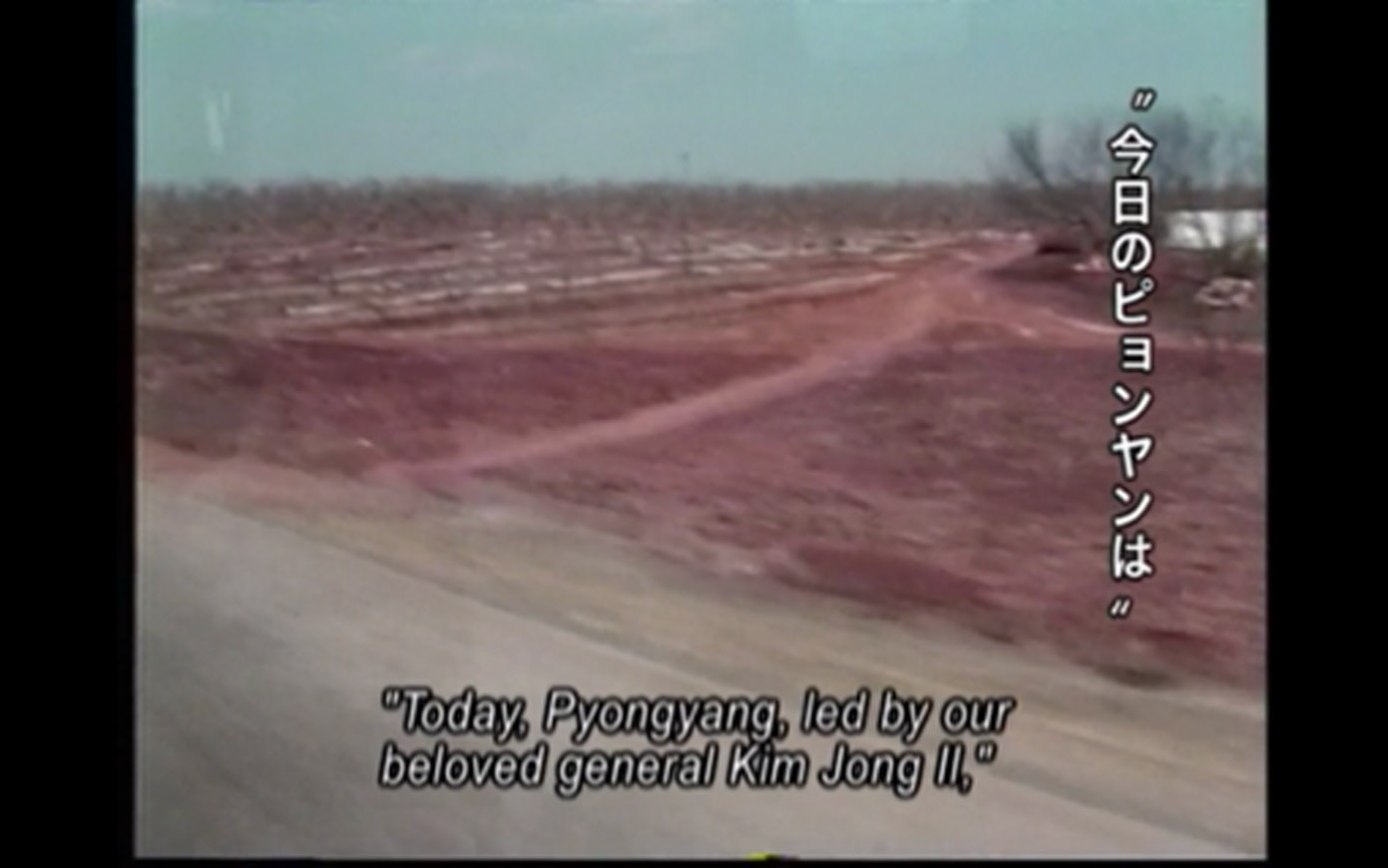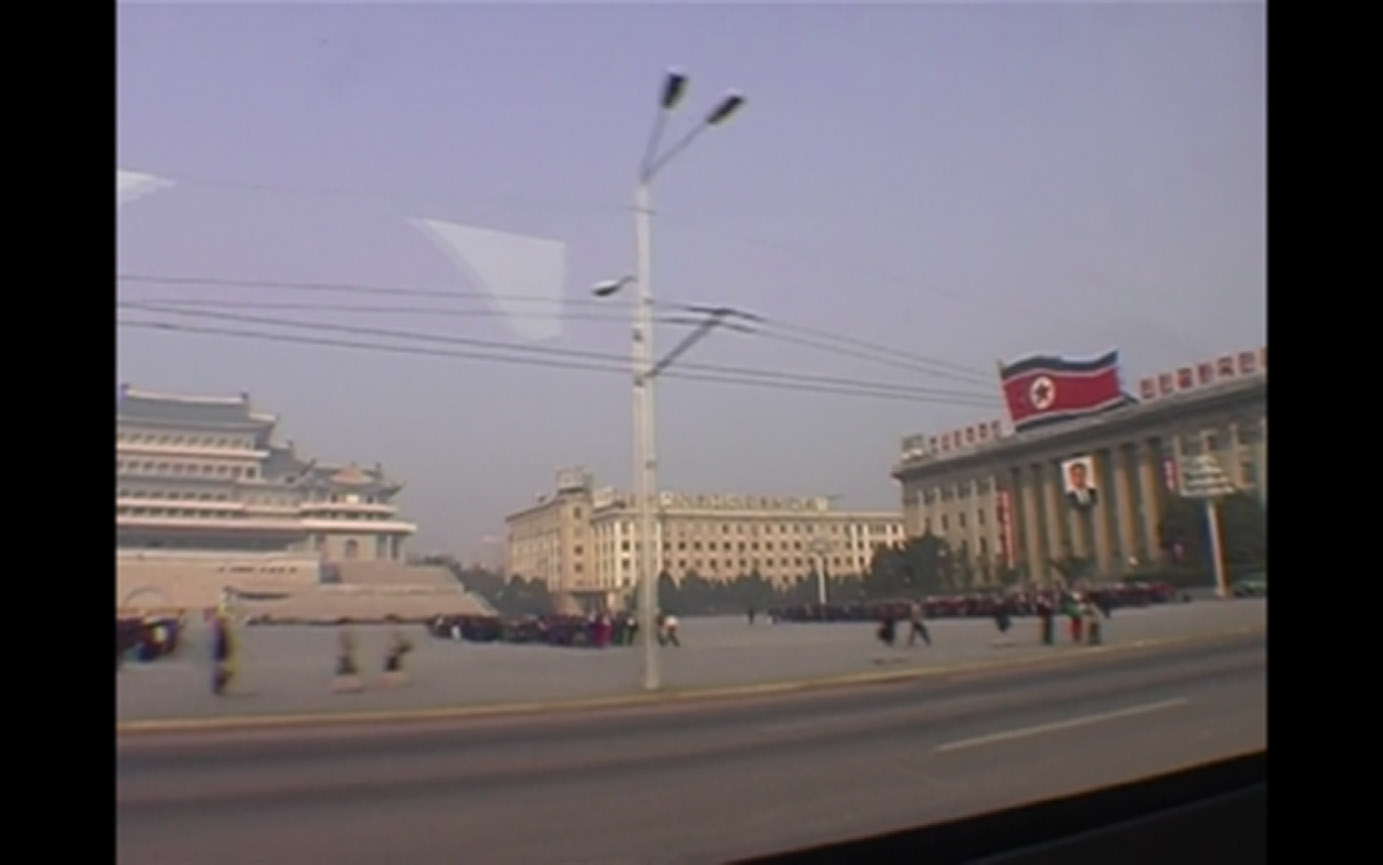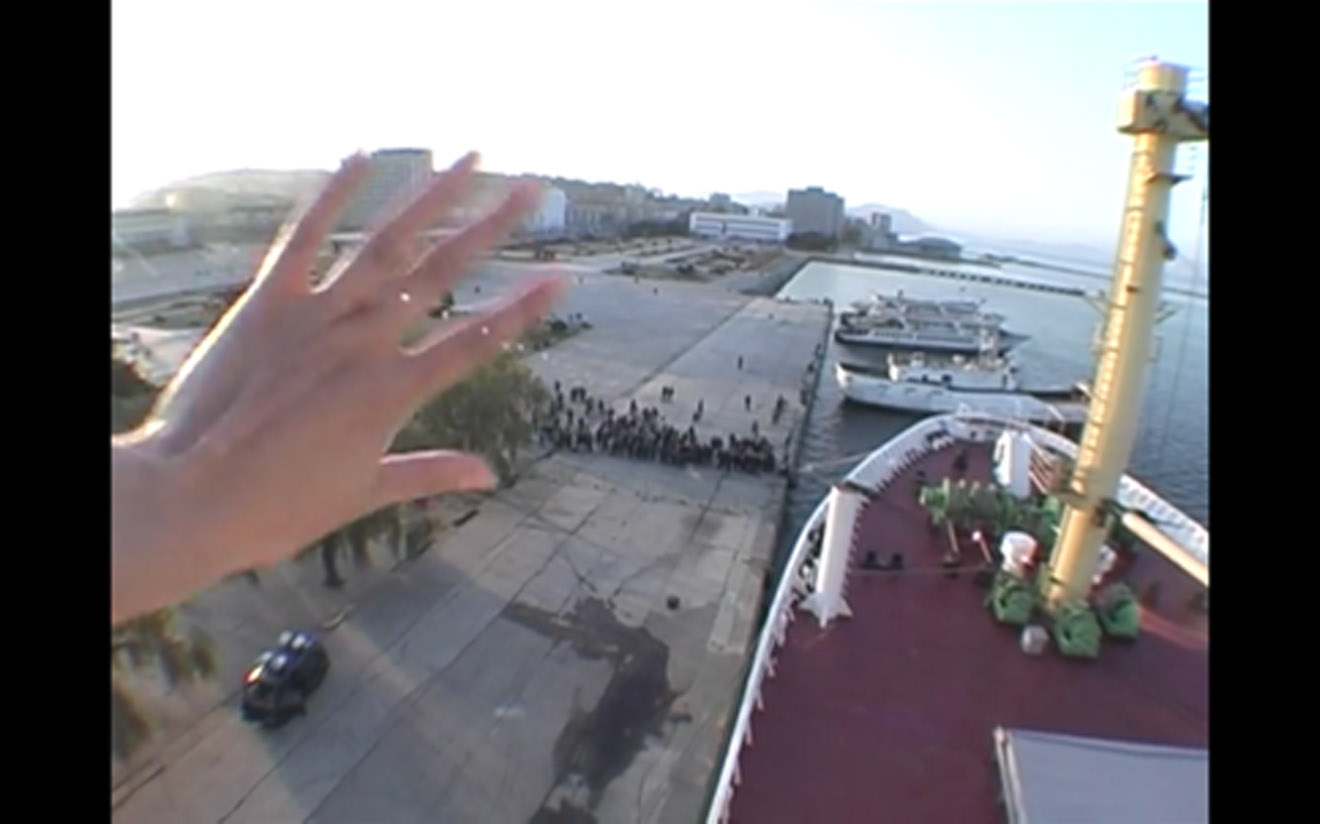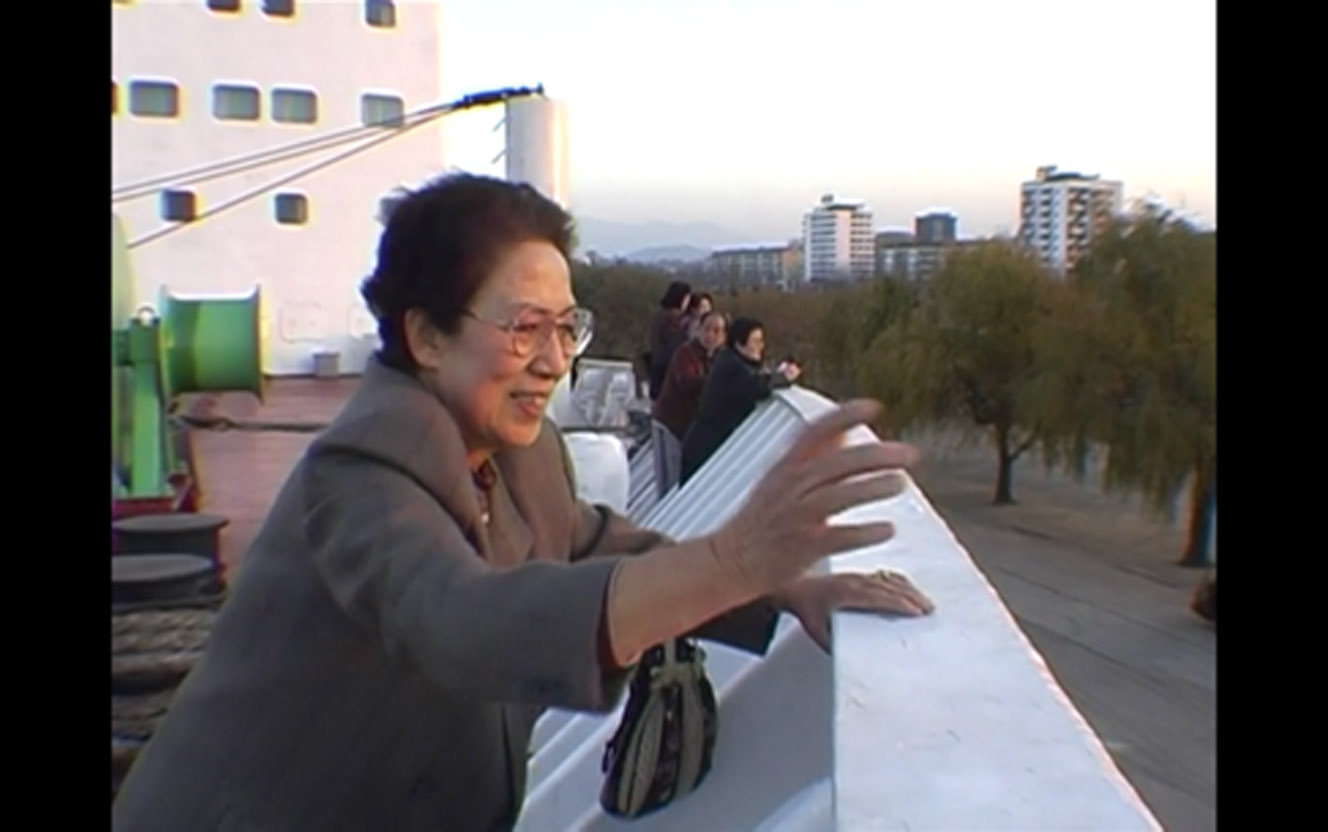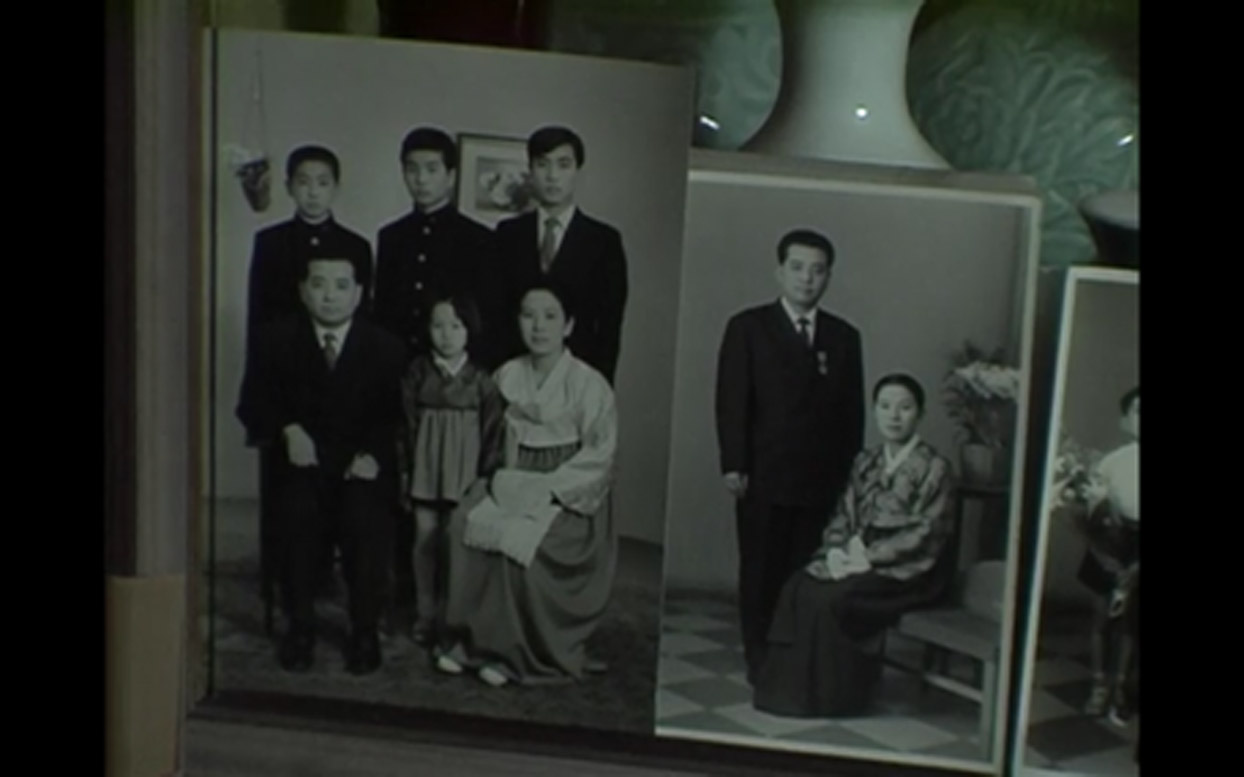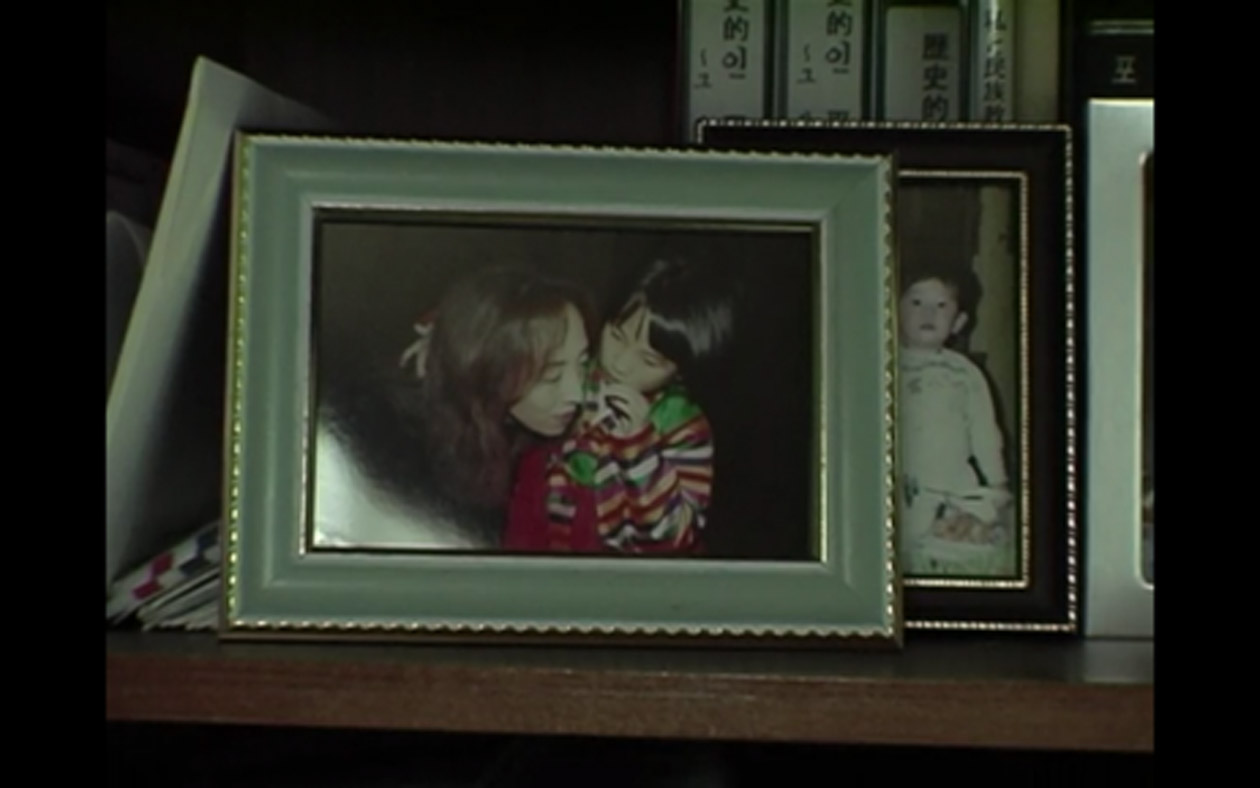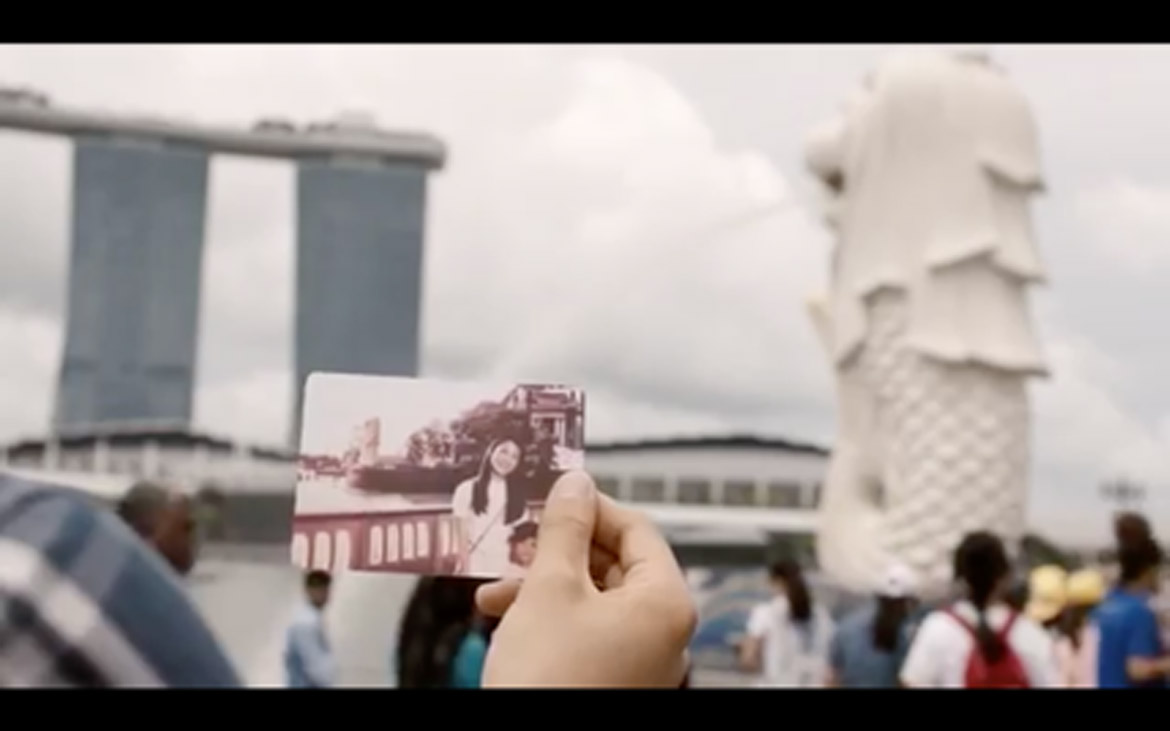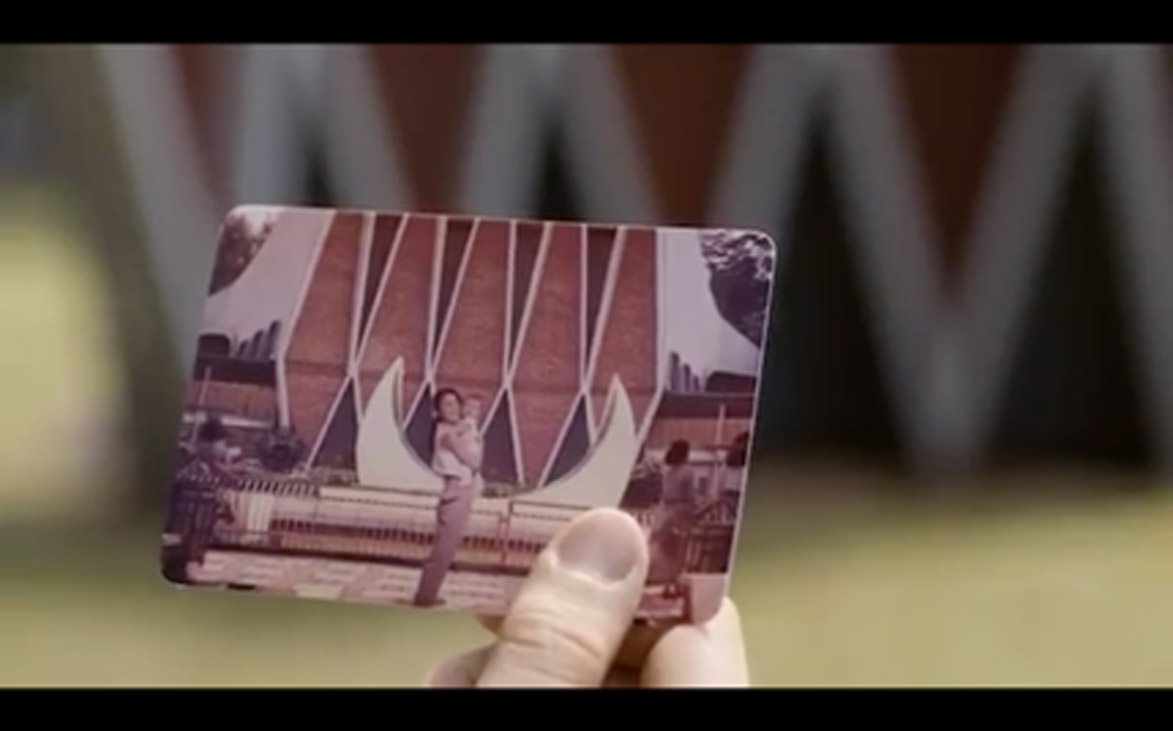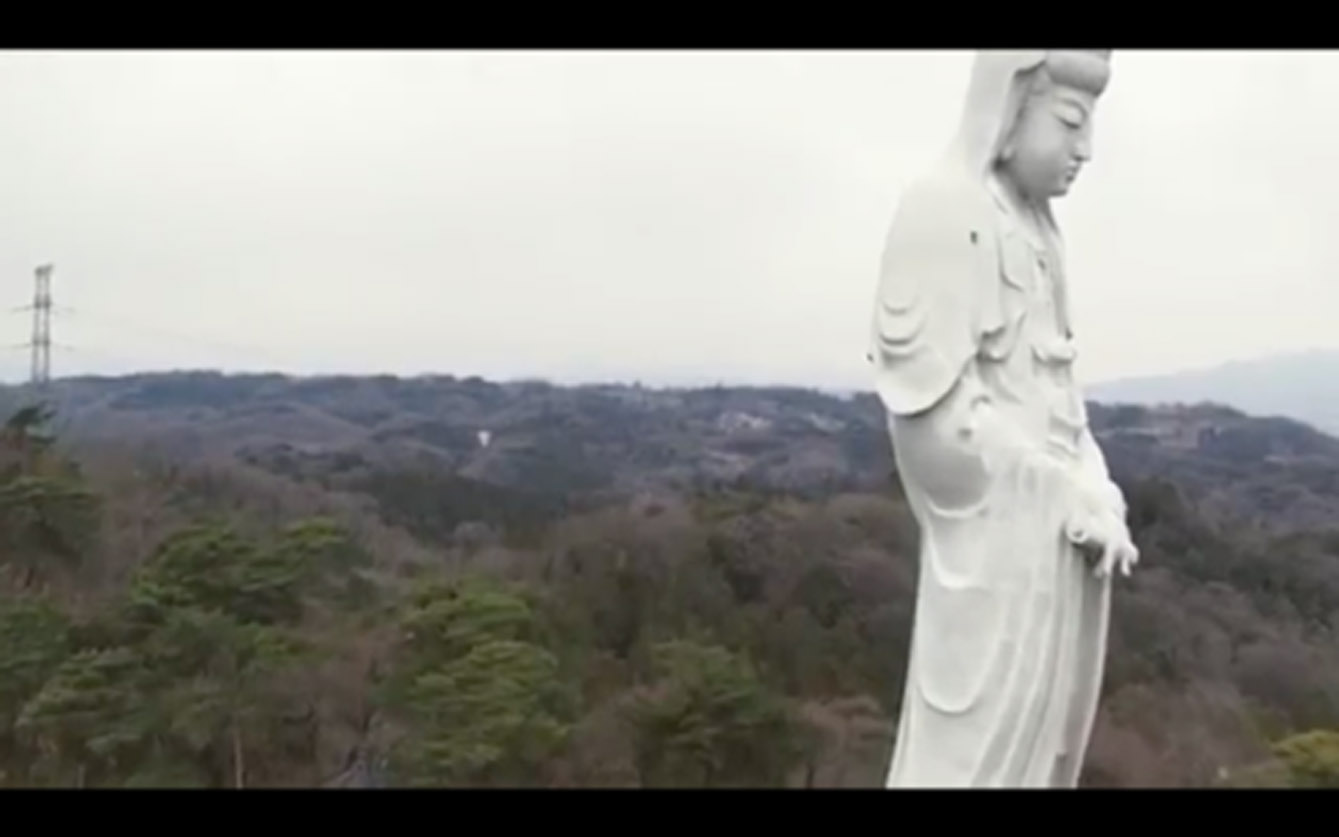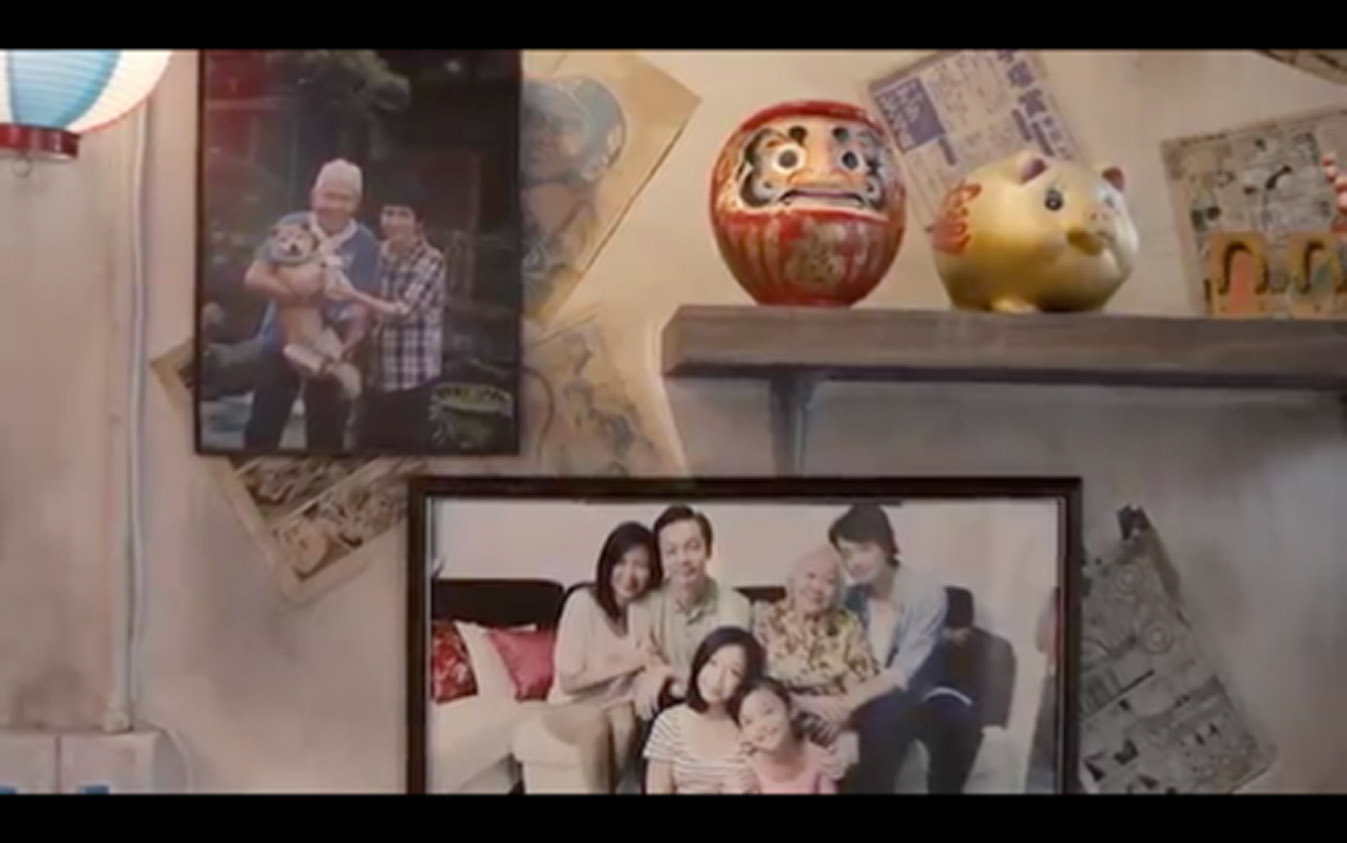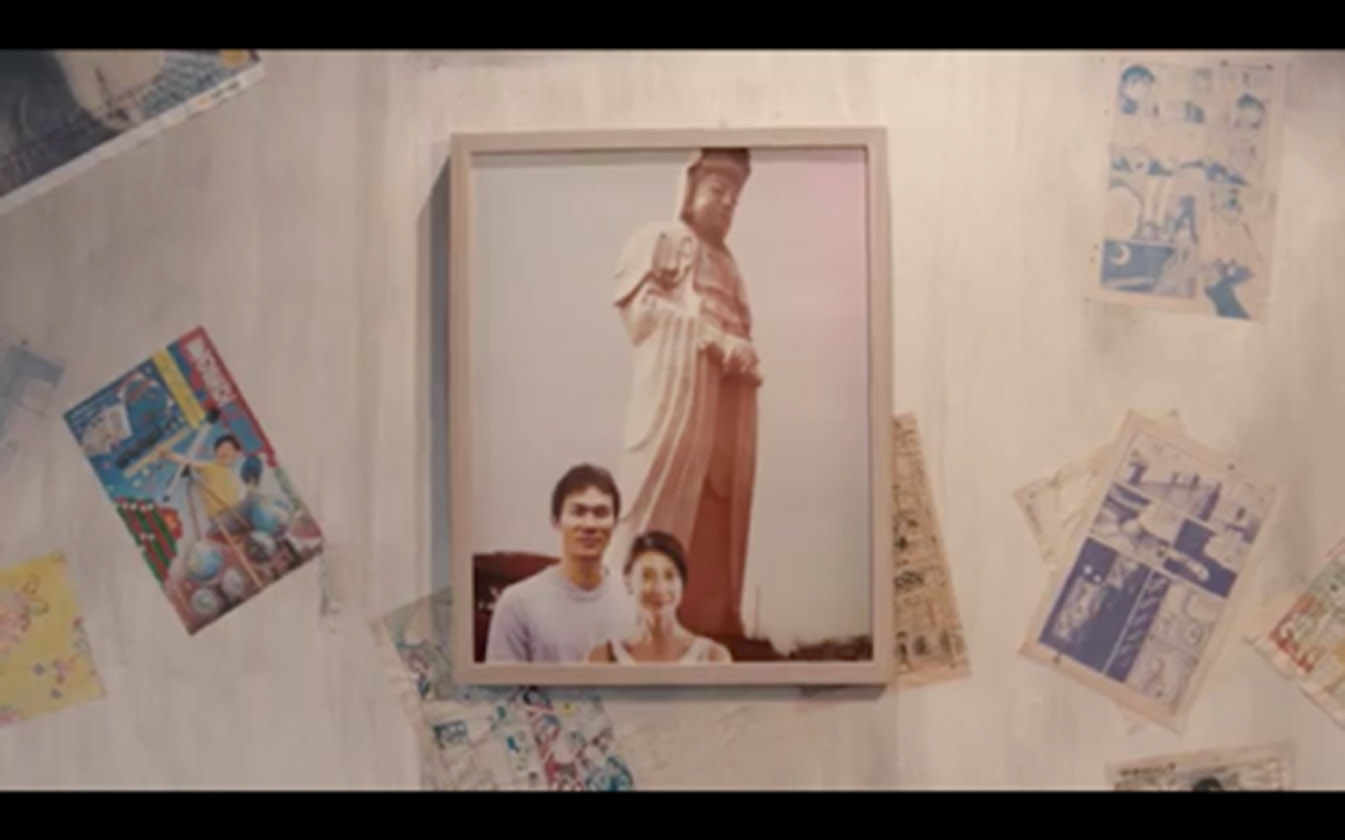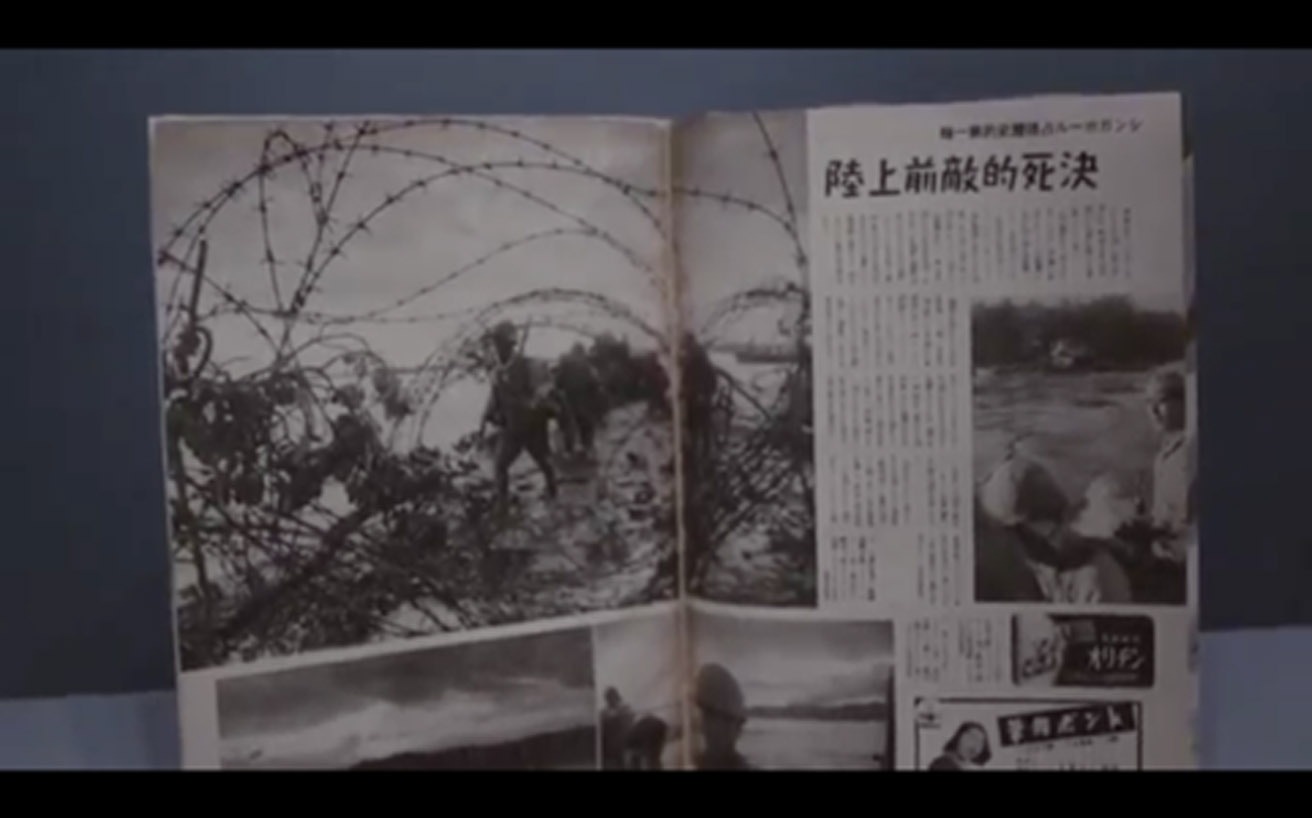Near the end of Yukisada Isao’s film Go (2001), Zainichi Korean protagonist Sugihara walks up to his father while at work at his sundries shop and declares, in Spanish,
His choice to articulate this in Spanish provides an alternative linguistic space to Japanese or Korean; Spanish becomes emblematic of a foreignness so far removed that it can be claimed for a meaningful assertion of a non-identity. Yet, despite being ‘desarraigado’, or rootless, Sugihara remains firmly rooted in Japan, studying diligently for university examinations to fulfil the wishes of his late friend Jeong-il. As Michael Weiner and David Chapman have described:No soy coreano, ni soy japones, yo soy desarraigado.1
(I am not Korean, nor am I Japanese, I am rootless.)
Such contestations of what constitutes ‘Zainichi’ identity can be traced to different historical delineations of Korean self-identification in Japan. The term Zainichi itself literally means to “be in Japan,” but is most commonly understood to refer to Koreans who migrated to Japan during the colonial period of 1910 to 1945 when Korea was under Japanese colonial rule, as well as during the aftermath of the colonial-era after World War II leading to the Korean War from 1950 to 1953. Zainichi is also taken to refer to the Japan-born descendants of these early generations of Korean migrants who have largely constituted this community after these periods of tumult. The normalisation of relations between Japan and South Korea in 1965 led to a concomitant transformation of the definition of Zainichi identity in the 1970s. Japan-born Koreans began to recognise their positions as a permanent minority in Japan rather than as exiles or overseas residents of North or South Korea.the fight for preserving Korean identity has also been waged on the inside of the zainichi community. Although appeals to diasporic solidarity have been powerful in critiquing notions of a unified Japanese national identity, such an approach often carries its own set of inevitable boundaries and expectations of conformity. As Anthias has argued, we need to exercise caution, for “diaspora may indeed have a tendency to reinforce absolutist notions of ‘origin’ and ‘true belonging.’”2
In the first period between 1910 to 1945, over 2 million Koreans migrated to Japan after the Korean Peninsula was annexed by Imperial Japan. Assimilative policies conspired to phase out Korean language use in Korean schools and force Koreans to take Japanese names. Korean men were brought in to meet labour shortages in Japan from the 1920s onward, but labour needs in industries such as mining, manufacturing, and the military intensified after the outbreak of war between Japan and China in 1937 and with the USA in 1941.3 Korean women were also forcibly conscripted as labourers and military prostitutes or “comfort women.”4 In preparation for conscription, a programme of imperialization (kom̄ inka) was hastened, galvanized by the slogan of naisen ittai (Japan and Korea together as one). This period was defined by discrimination and outbreaks of violence against Koreans, such as the Kantō Massacre that saw thousands of Koreans slaughtered after the 1923 Kantō earthquake.
After Japan’s defeat in 1945, millions of Koreans were repatriated to the peninsula, with 600,000 remaining through to the 1950s. This period would see the stripping of the legal status of Koreans as they ceased to be subjects of the Japanese Empire. By 1952, Koreans residing in Japan had lost “the right to political participation, the right to permanent residence, access to social security, health insurance, income benefits, and national veterans and bereavement pensions, the right to overseas travel, and access to certain educational and occupational opportunities.”5 The Zainichi effectively became alien and stateless peoples without rights to citizenship, with Zainichi itself becoming a kind of post-colonial denizenship.6 The partition of the Korean peninsula into the Republic of Korea in the South (referred to by the Japanese as Kankoku) and the Democratic People’s Republic of Korea in the North (known in Japan as Chōsen) led to similar internecine divisions within the Korean community in Japan. Affiliated with North Korea were the organisations of the Korean left, which would eventually coalesce in 1955 into the General Association of Korean Residents in Japan, known by the abbreviation Chongryon in Korean, or Sōren in Japanese. Their rivals, the Association of Koreans in Japan or Mindan, were affiliated with South Korea. Through the 1950s, repatriation to North Korea, then seen as more prosperous and promising than South Korea, was a cornerstone of Zainichi life. Supporters of the North greatly outnumbered those of the South until Japan’s normalisation of relations with the South began to erode Chongryon’s membership base.
Japan’s normalisation of relations with South Korea in 1965 led to a modification of the legal sense of being Zainichi. Zainichi Koreans were given the possibility of naturalising as South Korean and Zainichi who took South Korean nationality gained the right to remain in Japan and travel abroad. By the end of the 1970s, more than half of the registered Koreans in Japan had taken South Korean nationality, with this proportion peaking at 76 % in 1996.7 Those who did not take South Korean nationality and retained their affiliation with the North lacked the resources of citizenship well into the 1980s. Although a growing number of Koreans in Japan did naturalise as Japanese, the requirement to take a Japanese name was widely derided as an act of assimilation, recalling colonial-era policies.8 The 1970s also saw a movement to recognise and confront the denizenship of Koreans in Japan, whose identities were defined in part by the traumas of the colonial period and its immediate aftermath. These Japan-born generations of Koreans also began to press for representation politically and culturally, whether in politics, literature, or in film.
The divisions between the South Korean (kankokujin) and North Korean (chosenjin) communities in Japan persist until today, though questions of political identification have been less definitive for contemporary generations of Koreans born in Japan. While holding a passport from either North or South Korea represents, crucially, an existential choice between political regimes, the switch to a South Korean passport could be seen as a practical decision to younger Zainichi, bereft of older baggage. The notion that the Zainichi have an ostensible “homeland” that they can return to is problematized in the aforementioned film Go, both by the impossibility of being regarded as Japanese and the lack of affective, cultural, or political affiliation with the homeland in question.
This conceptualization of a Korean homeland is taken up similarly by filmmaker Yang Yong-hi. Yang’s father was a leader of the Chongryon in Osaka and made the decision to repatriate her three brothers to North Korea. While Sugihara is rootless and stuck in Japan in Go, Yang’s mobility between Japan and North Korea is captured in Dear Pyongyang (2005). There is a philosophical resonance between Dear Pyongyang and Go, not only in their interrogations of the chosenjin community and its ideological contradictions but in their approaches to portraying a search for belonging within the Zainichi community or in public spaces. The film’s presentation of space, through sequences featuring travel to North Korea via ferry, followed by its presentation of time, through family photographs, vividly capture the process of a diasporic return shorn of romanticism.
Examining these films opens up space for thinking about other Zainichi communities. Zainichi remains a slippery term, in part because its literal sense of being in Japan has been supplanted by its primary affiliation with Koreans-in-Japan. This occludes the presence of other Zainichi communities such as the Zainichi Chinese or newer populations from Vietnam, India, or the Philippines. Such communities are themselves marked by the different legacies of Japanese imperialism in Asia, as well as Japan’s attractiveness as a destination to live and work owing to its economic ascension. Eric Khoo’s Ramen Teh (2018), in particular, presents a form of mediation between these tensions. A joint production between Singaporean, Japanese, and French production companies, the film depicts the “return” of Masato, the son of a Japanese father and Singaporean Chinese mother, to Singapore.
There is no Zainichi Singaporean community, per se, in the same way that there is a Zainichi Korean community. Unlike the patterns of forced migration that culminated in the Korean presence in Japan in the early-20th century, Singaporeans in Japan are largely professionals who migrated in the latter half of the century to meet the needs of a developmentalist state. Despite Japan’s occupation of Singapore as part of its bid to construct the Greater East Asia Co-Prosperity Sphere, Singapore was only under Japanese rule from 1942 to 1945, a stark contrast to the 30 years of colonization endured by the Korean Peninsula. Moreover, Singapore itself only became independent as a nation-state in 1965, leading to a separate set of contentious questions regarding the construction of a new national identity.
What can be said of Ramen Teh is that it provides an example of new kinds of subjects being formed within the ambit of globalization and increased trade within Asia. Herein, the long shadow cast by Japanese imperialism cannot be ignored. Masato, the film’s half-Japanese, half-Singaporean Chinese protagonist “returns” to Japan as a child from Singapore, before “returning” again to Singapore as an adult. He uses old photos to structure his trip back to Singapore but the rapid pace of Singapore’s demolition and construction means that they no longer align with its built realities. The elision, however, of footage of Masato’s passage from Japan to Singapore distinguishes it from Go and Dear Pyongyang. While this emphasizes the seamlessness of air travel between Japan and Singapore, a process so banal that an airplane scene is irrelevant to the film’s diegesis, it also stands as indicative of the film’s non-linear mediation of space and time. Vitally, Masato’s narrative ends in Singapore as he opens a “ramen teh”9 shop, with him becoming an expatriate despite being able to claim that he has, decisively, “returned home.”
This essay thus aims to address depictions of an originary “return” for Zainichi subjects in Go, Dear Pyongyang, and Ramen Teh through their representations of travel and photographs. This in turn reflects radical ways time and space have been physically restructured over the last century. Geographer David Harvey has argued that economic globalization and the quick dispersal of information through communication networks is producing a “time-space compression,” outside of individual media.10 Marshall McLuhan has similarly described the process of unification through implosion as networks produce positive sensory linkages through a form of “electric implosion.”11
These perceptual reductions and conflations in the lived experience of time and space occur not only through the vast reduction in travel time facilitated by technological developments in transportation, but also via the sensation of synchrony offered by photographs and the Internet. While travel facilitates the ability to physically return to a supposed homeland, photography facilitates the possibility of an affective or imaginative return. Of course, photography can only serve as an imprecise representation of reality, even as it is able to temporarily abolish time and space, creating a coated reality of the photographer’s construction. Yet, if photography is privileged as an “imprint,” “mold,” or “trace” of reality, its place in cinematic diegesis serves to foreground its discursive and narrative character.
As motifs across all three films, travel and photography function as ciphers of space and time, integral to the Zainichi conceptualization of feeling rooted as opposed to the sensation of the “unhomely.” Scenes of travel present both its possibilities and impossibilities to Zainichi residents of Japan, as physical movement is unable to ensure a departure from Japan, but a departure from Japan may not resolve knotty questions of identification. Photographs, similarly, may aid in presenting an idealization or reminder of the past depending on who is being presented and where. Yet while the presentation of a condition of diaspora is concerned, the spatio-temporal dimensions of film are crucial to the depictions of the psychological, physical, and affective difficulties involved in Zainichi identification with a specific homeland.
***
Each of the three films discussed in this essay was made in the 21st century with Go produced in 2001, Dear Pyongyang in 2005, and Ramen Teh in 2018. Each mirrors profound shifts in Zainichi representation, particularly from the origins of Zainichi cinema. Images of Koreans onscreen in Japan originated in colonial-era propaganda films in the 1920s and 1930s created for Japan’s assimilative policies. In the 1950s, however, cinematic representations of Zainichi Koreans took two primary forms. The first was the widely-distributed melodramatic films produced by the studios Nikkatsu, Tōei, and Shōchiku, which portrayed Zainichi Korean protagonists through sympathetic, socially conscious lenses. Such films included Imamura Shōhei’s My Second Brother (1959) and Kirio Urayama’s Foundry Town (1962). In stark contrasts to these big studio films was the newsreels made by Korean associations, which would circulate in small community screenings. Between 1959 and 1985, Chongryon, representing Koreans affiliated with the North, released 124 instalments of the Chongryon Review’s newsreels as well as 300 documentary films,12 resisting the Japanese gaze through identifications with Korea itself.
Alternative depictions of Zainichi Koreans emerged in the figure of the sankokujin, or the third national, defying stereotypes of the sympathetic Zainichi or representations of the assimilation-resistant sojourner Zainichi. The sankokujin was featured in yakuza films from the early-1960s to the mid-1970s in films such as New Bad Reputation (Mori 1962), Eighteen Years’ Hard Labour (Katō 1967), and Kansai Murder Squad (Yamashita 1975). A significant trope in these representations of Zainichi Koreans in this period was an association of criminality. The Zainichi were depicted as “black marketeers, liquor bootleggers, illegal scrap metal salvagers, and owners of quasi-legal booths which circumvent the prohibition on gambling by exchanging prizes won on Pachinko arcade machines for cash.”13
One of the most prolific non-Zainichi directors of films representing Zainichi Koreans, Ōshima Nagisa, frequently played with this compulsive, recurring discourse of Zainichi criminality. Zainichi Koreans make appearances in many of his films, including The Sun’s Burial (1960), or feature as protagonists, as in Three Resurrected Drunkards (1968). Ōshima’s documentaries The Forgotten Imperial Army (1963) and The Tomb of Youth (1964) directly address Zainichi Koreans, while his masterpiece, Death by Hanging (1968) sought to use “Korean criminality and victimhood to indict Japan’s (post-) colonial aggression.”14 Death by Hanging itself was inspired by the Komatsugawa Incident in 1958, where Zainichi Korean Ri Chin’u raped and murdered two women, was engaged in correspondence with the Zainichi journalist Pak Sunam, and was executed in 1962. Ōshima, alongside other filmmakers of the Japanese New Wave, was part of the vanguard that instigated a move toward film production and exhibition outside of the studio system, influencing the contours of Zainichi cinema.
The 1965 normalisation of diplomatic relations between Japan and South Korea led to the growth of representations of the Korean peninsula and Koreans-in-Japan across mainstream to independent cinema. The 1970s saw a rise of Zainichi consciousness among second and third generation Zainichi Koreans who asserted a “Third Way” conception of being Zainichi, rejecting both assimilation into Japanese society and a return to a Korean homeland in favour of asserting the right to be citizens of Japan. This coincided with the first feature-length independent Zainichi productions, including Lee Hak-in’s three films Stranger’s River (1975), Aunt Shiu (1977), and Red Tengi (1979). Lee’s films featured an “explicit and authoritative claim to represent Koreanness as an identity formation predicated on being in Japan.”15
After the end of the Cold War in the 1980s, Japan faced a fully realised “new postwar.”16 The rise of “Asian tiger” economies including South Korea and Singapore began to contest how the region’s entangled history would be represented in circulations of images and narratives. Former comfort women began to sue Japan for reparations with the support of non-governmental organisations while Zainichi Korean voices demanding recognition of their compound identities were acknowledged. The emergence of South Korean cultural industries and the sweeping force of hallyu, or the Korean Wave, also saw Korean pop music, films, and television dramas gain popularity across East and Southeast Asia. The 1988 Seoul Olympics and 2002 World Cup hosted between South Korea and Japan stood as milestones in this “Copernican revolution” in perceptions of Koreans in Japan.17 Films about Koreans in Japan became merged into discussions of South Korean cinema, while joint productions between Japanese and Korean personnel emerged, including the films KT (Sakamoto, 2002) and Through the Night (Kim, 2002).
This period also saw the appearance of the first film festival retrospectives and essays on the Zainichi Korean image in Japanese film. In addition, the independent film company Cine Qua Non ushered the possibilities of Zainichi subject cinema as “crossover films,” beginning with Where is the Moon? (1993) a tale of a second-generation Zainichi taxi driver. This brings us to Go: by 2001, Zainichi stories were popular enough for major studio Tōei to produce the film, which proved to be a critical and commercial success. Cine Qua Non’s mass-market Pacchigi films (Izutsu 2004, 2007), as well as the aforementioned KT and Through the Night, also focused on Zainichi Korean subjects. Cine Qua Non also programmed the mini-documentary season “Think of Korea” which involved Repatriation (Kim 2003), A State of Mind (Gordon 2004), and the next film this essay will discuss, Dear Pyongyang (Yang 2006). The studio’s press copy urged audiences to “reconsider Korea, and reconsider Japan, through three points-of-view in three productions from around the Korean peninsula.” The films were positioned as providing insight into “the unknown North-Korean everyday,” and as intentionally countering mainstream Japanese narratives relating to North Korea’s abduction of Japanese citizens, whose cremated remains were repatriated in the early 2000s, and nuclear testing.18
While the idea of “Zainichi cinema” is uncertain, with many accounts hesitant to designate a corpus of Zainichi cinema, there nevertheless exists a construction of such films within an institutionally-located discourse. As Oliver Dew argues,
The power of the Zainichi image will continue to be imbricated in its ability to move beyond the burden of representing postcolonial trauma. While this has primarily been articulated in relation to the Zainichi Korean community, such images have provided a visual and symbolic language by which other elements of Japan’s imperial history can be interrogated. Most pertinent to this essay is the ways in which it enables such interrogation in the Singaporean context in Eric Khoo’s Ramen Teh (2018).Zainichi cinema appropriates a broad range of film practice from many points in history, incorporating colonial-policy films, post-war newsreels, 1950s and 1960s ‘conscience films’ and gangster programme pictures from the 1960s and 1970s. The sheer diversity of media now included within the purview of Zainichi cinema complicates the claim of any one text or any one mode of screen practice to ‘represent’ Zainichi Koreans.
***
Adapted from Kazuki Kaneshiro’s novel, Isao Yukisada’s film Go (2001) heralded a Zainichi protagonist not seen before: Sugihara (Yōsuke Kubozuka), the hyper-masculine romantic lead.19 His performance subverted narratives of Zainichi victimization under the guise of a youth film of self-discovery. In this respect, it recalls the experimentalism of Ōshima Nagisa’s Death by Hanging (1968), which refused to portray its Zainichi protagonist R as a representative of “Korea” as a “nation-state,”20 a minority whose crime is attributed to a “disadvantaged social position,” or a “ruthless murderer.”21
Go seeks to ground Sugihara’s inchoate self-conception within a physical stasis and psychological itinerance. The reckless, restless behavior of Sugihara and his friends is reflective of the spatial confines they experience as a consequence of their citizenship: they are physically unable to travel beyond Japan while trapped within societal constructions of Zainichi chosenjin identity. Go’s second sequence makes this apparent: the camera kinetically captures Sugihara and his Zainichi friends at a subway station, frames frozen to introduce opening credits as Sugihara outruns a train.
Sugihara’s dash is shown through various quick cuts, from his feet against the tracks, to side profiles in tracking shots, to running sideways across the frame. Sugihara, victorious, raises his arms as he runs to the next station, transitioning to him and his friends on a scooter trying to escape police cars. They veer into fields before hitting an impasse: a fence. These motifs of frenetic movement and barriers recur throughout the film. They reflect the limitations of hooligan attempts to transcend the deterministic structures of chosenjin society and the interpellation of the Zainichi in Japan at large.
In a later scene juxtaposing shots of Sugihara and his friends running through fields against him marching in formation at a North Korean school, the film employs quick cuts from various angles. Two moments of seeming liberation coincide: Sugihara diverges from the marching contingent in the North Korean school while he begins to fly in the field. Sugihara’s narration indicates that this relieving of restrictions stems from his “right to choose” between being a “North or South Korean national.” However, he collides with a fence again, camera tracking his flailing legs, before he rolls onto the ground.
Yukisada recalls Takashi Miike’s depiction of Zainichi Chinese yakuza in Dead or Alive (1999), who are neither Japanese nor Chinese and must flee from the police. Crucial to these outbursts of movement by Sugihara and his friends is the question of mental stability, the extent to which such restless displays are assertions of identity against restrictive social structures. Presented alongside Sugihara’s desire to look beyond the determinism of his identity, whether biological or anthropological, physical restrictions demonstrate the futility of realizing a physical return. He and his friends’ movements are a way of keeping “control in their small pen.”
However, this sense of movement–running, flying, marching–does not necessarily connote the idea of “travel.” It is thus instructive to turn to Go’s use of photographs as a way of collapsing movements across time and space; images of travel represent the ephemerality of a joy sought elsewhere, where the determinism of Zainichi identity loses its weight. The desire to travel is introduced when Sugihara’s father watches a television broadcast of a Japanese travel show, revealing scenes of a beach in Hawaii. “Aloha ‘Oe” plays in the segue to the next scene, where Sugihara’s father changes his citizenship to become a “zainichi kankokujin” or Zainichi South Korean, slamming books of North Korean ideology and assorted pins on a table at a bureaucratic office. This is followed by a cut of the camera moving through the corridor of the house, revealing an image of Sugihara’s parents in Hawaii on a shoe rack, wearing leis, flanked by women clad in stereotypical coconut shell bras and grass skirts. A series of jump cuts brings the camera right onto his father’s face, blissfully receiving a kiss. Ostensibly, the elation captured in the photograph cheapens the intentions behind their passport switch.
The selection of Hawaii rather than other Pacific tourist destinations such as Okinawa or Guam raises the specter of an American racial discourse, one where American nationality is not wedded to an ethnogenetic definition. Hawaii is a fantasy vacation space, a construct of American empire. As David Roh argues, tertiary national spaces are a means rather than ends—a place to occupy temporarily to renegotiate the domestic self.22 The photograph symbolizes the allure of a world beyond Japan, one where a South Korean passport provides flexibility while shunning the possibility of a return to North Korea. Irony lies, however, in the inability to negotiate this domestic self in domestic spaces.
The shoe rack that this photo stands on becomes an anchor as the film progresses. After a bout of training with Sugihara, his father sits and shouts into pouring rain. Not recognizing his words, Sugihara asks, “What’s that?” His father replies, “Spanish. Wanted to be a Spaniard a long time ago.” The sounds of castanets and flamenco guitar indicates a trip to Spain–the scene cuts to the rack, panning to reveal a photograph of his father in a suit, his mother in a dress with a rose in her hair, their arms stretched upwards like dancers, Sagrada Familia in the background.
The photograph presents a moment of cultural mimicry as his parents adopt, comedically, the attire and behavior of the Spanish. Again, the politics of ethnic fantasy come into play, with Spain functioning as a space where his parents do not face the baggage of their Zainichi identity. Photography allows the sense of a constructed reality to linger, the memory of being able to discard such national baggage. Sugihara’s learning Spanish picks up this thread, though it ultimately functions as an arbiter to articulate his own rootless third way.23
The final photo revealed is of Sugihara’s father and uncle. As his father laments the passing of his brother Tae-hyun, the film temporarily enters a melodramatic mode, melancholic music playing over his father’s recollections of poverty. This is interrupted by Sugihara calling it “bullshit,” alleging that sob stories do not make up for the contradictions in identity left to the next generation of Zainichi. The film cuts back to the rack, panning to a photograph of Sugihara’s father and uncle as children.
It is ambiguous whether it is taken in North or South Korea or even Japan, but Sugihara’s uncle is revealed to have gone “back to North Korea in the 50s.” The construction of a return as ideological makes apparent that going to North Korea was, theoretically, an option for Sugihara’s family. This image contrasts starkly to outlandish images of travel in Hawaii and Spain, functioning to bring the viewer into the history of the partition of the Korean Peninsula, temporarily collapsing Zainichi past and present. On their return home, however, he reflects:
As Sugihara makes clear, the photographs remind the viewer that relinquishing chosenjin citizenship is the necessary first step to enable access to the wider world, rather than having to cling to a Japanese re-entry permit. This indicates that South Korea’s imbrication within the global capitalist system facilitates travel across borders as well as identifications within new borders. A kankokujin nationality works, ultimately, to serve Sugihara’s desire to “wipe out borders”–dissolving the boundaries of Korean/Japanese, North/South, Japan/World. The promise of the photographs is the expansion of an imaginary space, where the rootless wanderer can expand the range of his wandering.Why the stupid picture in our entrance? Why the change in their nationality? It wasn’t to go to Hawaii. It was for me. My father tried to take the shackles off my legs.
However, as Ichiro Kuraishi notes, “this desertion of the past obviously carries a conservative, almost reactionary message of antidiaspora and antiethnicity.”24 Rootlessness is, ultimately, inadequate as a means of transcending the legal constraints of being Zainichi in Japan. Japan continues to be a place Sugihara cannot return to, while South Korea cannot be any more meaningful a homeland than North Korea. In Go, rootlessness seems not necessarily to function as “antidiaspora,” certainly not as a form of “race blindness,” but perhaps a waypoint in the broader discourse on Zainichi Korean identity politics. The motifs of travel within and beyond Japan’s borders, as well as the ways the constructed reality of photographs collapse time and space where Zainichi identification are concerned, represent Sugihara’s physical entrapment and psychological disaffiliation from identity categories.
***
In contrast to Go, Yang Yong-hi’s Dear Pyongyang captures the possibility of a return to a homeland. As a shiteki dokumentari, or personal documentary, the film individualizes the landscape of non-fiction before and behind the camera.25 As Catherine Russell argues, video cameras being relatively cheap, light, and non-specialised in nature contributes to their “economics of ‘coverage.’” They are able to capture long durations of everyday life, recording the most intimate spaces of the body and the home.26
The film explores the ideologically over-determined decision made by Yang’s father, a Zainichi activist and community leader, to “repatriate” his three sons, Yang’s older brothers, to North Korea in 1972. He, his wife, and Yang remained in Japan, irreversibly dividing the family into two. Oliver Dew argues that this trauma that cannot be incorporated into a humanist framework of filial self-sacrifice because Yang’s father sacrifices his sons rather than himself.27 As the film progresses, it becomes apparent that Yang’s visual absence from the film parallels her absence from her family’s decisions and its collective political ideology. Where her body image does appear, it is as a child, looking out from the surface of discoloured photographs from the 1970s and 1980s.28 As Dew observes, “her questions and recollections [guide] throughout, characterised by an introspective bent likely to call into question the images seen on the screen and casting their meaning into doubt.”29
Yang’s representation of this physical and ideological schism within her family relies heavily on photographs. With her brothers unable to leave North Korea, the photographs Yang presents are physical, placed above doorways and on cabinets, but also digital, filling the entire frame. They allow the viewer to envision her familial history in vivid fashion, capturing her family aging and their participation in Chongryon activities over 50 years. Photos reveal her father delivering speeches on podiums, in Pyongyang in front of a statue of Kim Il-Sung and leading the opening of a North Korean school.30 Yang later transitions to speaking of his meeting her mother, featuring their wedding photo and her own participation in Chongryon activities. Time is flattened, packaged, and presented to the viewer in articulating her parents’ personal history.
The next photo montage segment features the “first and last family trip” undertaken by Yang’s family. The romanticized vacation photo becomes bittersweet as it prefigures her brothers’ return to North Korea. Dew notes that the film creates a sense of the anti-home movie, the photos that usually commemorate the rituals of family life here portending the moment that the family is to be ripped apart.31 Photos of that trip appear onscreen: her three brothers in trunks on the beach, a young Yang being hoisted on their shoulders, Yang and her parents by the sea. A final family portrait, formal and facing the camera, is taken to commemorate the return. Photographs, more so than travel footage, thus signify the crossing of borders and geographical space. They foreground a sense of borders hardening geopolitical divisions.
A subsequent montage of photos of Yang’s childhood reveals her obedience to the North Korean cause: images of Yang in hanbok against the North Korean flag, smiling photos of her and her friends. In this sequence she confesses the guilt she feels both as a “survivor” of the repatriation programme and as one complicit in the ideological structures that demanded the repatriation of her brothers. Her voiceover explains:
Yang’s comment foregrounds the co-implication of the domestic ethnography, the coupling of accusation with self-accusation.32 She discloses her eldest brother Kono was a promising piano player when Western music was banned in North Korea. Yang entwines music through Kono’s life by sending Chopin and Rachmaninoff CDs to him once the regime permits classical music, which proves crucial for his son Unsin’s musical development. Years after this footage, Yang listens to a 14-year old Unsin, having graduated from the Pyongyang Music and Dance College Elementary School, playing Liszt on the piano in their Pyongyang apartment. Kono sits on the floor, listening to the music wrested at the moment of “repatriation.”33I listened to my brother’s Beatles records and saw films and plays. These were ordinary parts of daily life for me, born and raised in Japan. I repeatedly heard of the “revolutionary capital Pyongyang,” but what I really wanted was to get a sense of the Pyongyang where my brothers were living.
Throughout the film, Yang’s presence in Japan does not seem to trigger similar questions to those present in Go. Yang does not fashion herself as “rootless” and clearly has a firmer sense than Sugihara of being Korean. Yang’s depiction of her physical ability to travel to North Korea enables the fiction of a mythicized return to be disassembled. For Yang, the sea is not the outer limit of Japan. As she narrates, “Have the two countries, Japan and North Korea, been separated or connected by this ocean?” In shots on the ferry from Japan to North Korea in advance of her father’s birthday celebration, Yang’s camera zooms in on emergency lifeboats, then zooms out to reveal mountains over the water, before panning to reveal a lingering view of the ocean.
This creates a more expansive sense of the physical space between Japan and North Korea, one that sidesteps the sensation of proximity that can be constructed through air travel. Yang notes the onerous nature of this journey, “Instead of a 3 hour flight they must make a 3 day journey by plane, ferry, and bus. From Japan, North Korea seems very far, yet it is just next door.” The representation of this journey by ferry through fixed and long shots elongates the sensation of travel, as well as the concomitant dread or delight arrival can bring. A return, even a temporary one, is rife with time and space for introspection.
Space and distance are also represented through Yang’s shots of overland travel. As the ship arrives in Wonsan, Yang remarks that the cityscape looks the same as it did 20-years prior, as if “time has stopped.” The film cuts to footage of the rural, sparse lands next to the highway between Wonsan and Pyongyang. As their guide waxes lyrical about North Korea’s distinguished status as a socialist nation, Yang’s footage underscores the hollowness belying the rhetoric of revolution. Where North Korea can be idealized over the course of the onerous journey by sea, it becomes impossible for these fictions to be hidden on the road.
Upon arriving in Pyongyang, Yang relies on still and moving shots to capture residential buildings, grand halls, and administrative buildings with the Kims’ portraits emblazoned on them. As they drive and walk around Pyongyang, the effect of Yang’s footage is to subordinate grandiose representations of North Korea to the mundanity of home video footage. Her lens observes decrepit roads and buildings, red peppers dried on the streets, and rows of briquettes used for warming homes. Yang’s narration is absent in these sequences, if only to underscore the notion of North Korea being stuck in a past Japan and South Korea have left behind.
The presentation of Yang and her parents’ return to Japan foregrounds the uniqueness of their mobility, with her brothers and their families unable to leave North Korea. As the camera zooms in on her family members waving from the harbor, it replicates the pathos of Yang’s gaze, perhaps not necessarily a piteous or condescending one, but a sorrowful one nevertheless. Yang’s waving hand is visible in the shot. The film cuts to her mother leaning against the railing waving furiously and bowing to her family as the ferry departs.
The promise of Yang’s return and their reunion is what sustains her repeated visits to North Korea. However, the film does not seem to dwell on the possibilities of a Korean-Japanese identity either, at least not explicitly. Yang’s returns to North Korea do not nourish warm feelings toward her homeland, evidenced by the ideological fissures they create as well as her eventual decision to take on South Korean citizenship.
And yet, Yang demonstrates the symbolic significance Pyongyang continues to bear for her parents. In their home in Ikaino, Yang features close-up shots of photos of her family on a cabinet. These capture Yang as a child, Yang and her niece, and images of her nieces and nephews. These photographs are juxtaposed against footage of her father’s hospitalization, intuiting his absence through shots of their home’s interior. In Ikaino, photographs provide affective tethers to family, which in turn provide affective tethers to North Korea. Yang uses photographs not only to build the narrative of her parents’ ideological development and foreground the distance between her brothers past and present, but also to provide emotional anchorage for her parents in Pyongyang.
Footage of travel illustrates the difficulties associated with the logistics of Yang’s return while exposing myths about the ideological project of repatriation. The effect of her handheld camera is to demystify North Korea through the subjectivity of the home video. Photography, by contrast, facilitates the construction of a reality that North Korea is home for her parents, but not for Yang herself. While North Korea has become a home for her brothers by force of return, and for her parents by way of ideological and emotional commitment, it cannot remain so for Yang. Yang’s subjectivity as a Zainichi Korean is not problematized – the subtext of her attaining South Korean citizenship is that the Zainichi community of Japan, or even Osaka, provide a greater sense of home, even if her family in Pyongyang create feelings of belonging.
***
Thus far, this discussion has focused on representations of Zainichi Korean subjects, particularly the difficulties present in the notion of a homeland and a return to one. That Japan has not, cannot, and will not function as homeland is a difficulty that operates across generations, whether in the first generation that regards Japan as a temporary place of stay, the next generation for whom a third way must be articulated between Japan and Korea, or subsequent generations who have less qualms taking on Japanese citizenship.
Yet, these models of longstanding “foreign” communities in Japan can only provide cursory ways of thinking about the phenomena of other Zainichi communities that have emerged as a result of globalization. As Stuart Hall writes, it was “inevitable that the mass migration unleashed by the forces of globalization would create new and pressing cultural and political questions.”34 Films such as Iwai Shunji’s Swallowtail Butterfly (1996), Yamamoto Masashi’s Junk Food (1997), and Fukada Koji’s Hospitalité (2010) are attempts to think through the multiculturalism brought about by the influx of foreigners, driven by the remunerative possibilities of Japanese capitalism. There is also the other dynamic of Japanese citizens returning with foreign spouses, as captured in the film Hafu (2013). The multiplicity of new Zainichi communities yields new ways of contesting and yielding to the ideology of nihonjin, or Japanese national and cultural identity, within multiplying frames of reference.
It is within this context that we can read Eric Khoo’s Ramen Teh (2018), which features Masato, a half-Japanese, half-Chinese Singaporean protagonist. Khoo was tapped to celebrate 50 years of diplomatic relations between Japan and Singapore through film, with the decidedly conciliatory Ramen Teh being its result.35 The film is a departure from Khoo’s usual oeuvre, with most of his films focusing on the working-class lives of Singaporeans who dwell in public housing heartlands, places portrayed as oppressive, deadening, and tragic.36 In taking up what is largely melodrama, Khoo relies on sentimentality as a strategy for representing reconciliation between Japan as an imperial power and Singapore, its historical colony.
Living in Takasaki, Masato works as the son of a ramen chef who was part of the first wave of Japanese chefs moving to work at prestigious restaurants in Singapore. It is there that he met his Chinese Singaporean mother at a bak kut teh stall. Masato is born and grows up in Singapore until he is 10. His family moves to Takasaki owing to his mother having been disowned for marrying his father Kazuo. In a throwaway line, Masato’s uncle remarks remembering how it was “hard for Masato” when he moved back.37 Yet, Masato passes comfortably as fully Japanese, speaking little Mandarin, Teochew, or Cantonese ordinarily spoken by the Singaporean Chinese. In fact, there is little to indicate that Masato is anything than fully Japanese in the film until his point of departure, which may make it difficult for a Japanese audience to think of him as Zainichi.
As the child, effectively, of neoliberal globalization, the construction of Masato’s identity fissure is less fraught than that of the aforementioned Zainichi Korean subjects, for whom North Korea is “home” because of a predetermined ideological commitment. Masato literally spends the first third or so of his life in one homeland before moving to his father’s homeland: there is a circularity to his return. Upon his father’s death, Masato rediscovers his mother’s diaries, recipes, and old photographs. In Masato’s return to Singapore, travel and photography are doubly entwined; the photographs become his guide as he tracks down landmarks of his childhood and takes new photos. Where photographs in Go symbolize the promise of an expanding international mobility, and in Dear Pyongyang represent bygone phases of Yang’s family in Japan, in Ramen Teh, they create an enfolding of past and present as Masato attempts to sync his memories of Singapore with present reality.
Unlike Dear Pyongyang, travel between Japan and Singapore is conveniently sidestepped. The film cuts from Masato closing up his home straight to Marina Bay Sands, camera hovering in aerial shots before cutting to food being prepared in hawker centers. The montage further functions to create a commonality across the places Masato visits. A photo of him and his mother by the old, small Merlion is juxtaposed against its larger, contemporary counterpart spewing water. A photo of the National Theatre is moved to reveal a landmark as it was demolished in 1986 to make way for an expressway (curiously this suggests the youthful looking Masato is in his early 40s). An image of the rocket tower at Upper Seletar Reservoir reveals that it is still standing as he walks down a long path toward it. Lastly, he returns to the apartment complex he used to live at. Khoo weds the touristic gaze to the nostalgic; Masato is positioned as a former insider for whom Singapore has been made foreign by his time away.
Monica Castillo observes that, “The colors change from a somewhat pastel view of the present day to a washed out, soft-focus perception of an idyllic past, like faded family photographs.”38 The nostalgia of an ostensible “outsider” becomes entwined with the nostalgia of the Singaporean populace. Khoo consciously selects demolished landmarks to represent the passage of time between Masato’s unwilling departure from Singapore and his arrival in Japan, even if the supposed collapse of past and present leaves chronological incongruities.
In reconstructing the movements of his parents, Masato imagines the yoking of common landmarks between Takasaki and Singapore. His mother is shown introducing his father to the rocket tower as the closest analogue to Takasaki’s Byakue Dai-Kannon. When Masato visits the tower, the film cuts between him in present day and the pastel colored memory of his parents sitting by the reservoir. It then cuts to Masato’s view from the tower to a slow pan of Takasaki buildings leading to Kannon.
Here, travel is imaginative rather than literal, a way for Masato to reconstruct his father’s homesickness. Moreover, upon their move to Takasaki, Khoo defers to the language of the Japanese natural world as Masato’s mother attains fluency in Japanese and undertakes her own process of becoming an “other,” assimilating into Japanese culture. As with Sweet Bean, the beauty of the cherry blossoms provides a space for “healing,” even while laden with essentialist notions of Japanese conceptions of nature. To Masato’s mother, street-level travel becomes a constitutive space for forgiveness.
By the film’s conclusion, photographs function as symbols of reconciliation: at Masato’s newly opened “ramen teh” restaurant, images of his parents and Takasaki relatives adorn its wall, as well as a new photo of Masato with his grandmother and uncle’s family.
This, however, elides the role that photos play in bridging the time between Japanese-occupied and contemporary, independent Singapore. When Masato reappears to meet his grandmother, she immediately withdraws to her room, poring over an old photo album featuring monochrome images of her family in the 1940s. A flashback reveals the deep roots of their hatred toward the Japanese: Japanese soldiers had killed Masato’s great-grandfather, ostensibly in the Sook Ching massacre that sought to systematically purge suspected “anti-Japanese elements.” This resulted in the deaths of between 25 000 to 50 000 Chinese Singaporeans.
The didactic purpose of photography is later taken up as Masato goes to an exhibition detailing the atrocities committed by Japanese soldiers in Singapore. Black-and-white images of Japanese soldiers and Singaporean prisoners adorn the exhibition space, juxtaposed against Masato’s listening to an interview with a woman who witnessed the spearing of a Chinese infant by a Japanese soldier’s bayonet.
Pictorial evidence not only underscores the fraught relationship between Japan and its former colonies, but the fissures within Masato himself. They also serve as a reminder to Japanese audiences to learn about their imperial, wartime past. While food metaphors are often used to describe Masato–his friend Miki says he is like “ramen,” the best of Chinese and Japanese cultures, and Masato is able to seek reconciliation with his grandmother by combining ramen and bak kut teh–rarely are they used to trouble the possibility of reconciliation across wanton cruelty.
Photographs, in Ramen Teh, thus do not only construct the nostalgic time and space Masato yearns for and open up the possibilities of seeking lost family members, but remind audiences of the long shadow of Japanese imperialism. The temporary collapsing of time and space cannot avoid the spectre of violence and trauma. Caught within the historical tension between Singapore and Japan, the film utilises photography as a way of presenting such difficulties through the mediation of time. While there is a pedagogical dimension to representing their historical relationship, the juxtaposition of photographs of past and present within a single space, especially in Masato’s restaurant, creates the sensation of an enfolding of time. There is a momentary, utopian possibility that past and present can coexist.
Ultimately, however, the film reserves its most pointed metaphor of hybridity for the eponymous dish “ramen teh.” Whether the film can be considered Zainichi nevertheless remains difficult, if only because of the new porosities in identity, belonging, and affection that have come as a result of Japan’s position within systems of global capital.
***
This essay has attempted to demonstrate how the issues of belonging, mythicized homelands, and the ideological construction of a return are represented through depictions of travel and photography in Go, Dear Pyongyang, and Ramen Teh.
With regard to Go, while travel, in the form of restless movement within Japan, represents an inability to return, photography represents the possibility travel beyond the boundaries of Japan as enabled by kankokujin nationality and the potential expansion of the imagination to new homelands.
In Dear Pyongyang, the converse is true – photographs are reminders of the past lives of Yang’s brothers in Japan and the disjuncture with the ideological promise of life in North Korea. Photographs also have a didactic function as Yang seeks to inform the viewer about the history of Zainichi repatriation through old photos. Travel footage, captured through Yang’s handheld camera, functions to dispel these notions through the intimacy of the home video.
In Ramen Teh, travel and photography are entwined in Masato’s return to Singapore, functioning to enable Masato to track down his relatives, revisit the places of his childhood, and attempt to come to terms with the fraught history of the Japanese occupation of Singapore. Photographs provide an aesthetic continuity to connect Masato to his parents’ past while also alluding to the multiplicity of homelands that new Zainichi communities may experience, particularly owing to mass flows of people across East and Southeast Asian trade links.
While Go juxtaposes frenetic and swift camera movements against Sugihara’s physical stasis in Japan, and Dear Pyongyang’s photo montages and handheld camera-style render the ideologically fraught nature of her family’s return to North Korea intimate and accessible, Ramen Teh defers to a somewhat obvious filmic language to tease out connections between Japan and Singapore, past and present. In connecting characters across times and places, these films ground identity construction within tangible discourses of situatedness and affection, sometimes to obvious effect as with Ramen Teh, within an affectionate ambiguity in Dear Pyongyang, or in the strident rebelliousness of an indeterminate identity in Go.
Acknowledgements
This essay was written under the supervision of Dr Aaron Gerow at Yale University.
Notes
- Go, directed by Isao Yukisada, Toei: 2001. ⮭
- Michael Weiner and David Chapman, “Zainichi Koreans in history and memory,” Japan’s Minorities: The illusion of homogeneity, ed. Michael Weine. 2nd edn. (Oxford; New York: Routledge, 2009) 171; Floya Anthias, “Evaluating “Diaspora”: Beyond ethnicity?”, Sociology 32 (1998): 577. ⮭
- Sonia Ryang, North Koreans in Japan: Language, Ideology, and Identity (Boulder, Colorado: Westview Press, 1997) 6. ⮭
- Sebastian Conrad, “Remembering Asia: History and Memory in Post-Cold War Japan”, Memory in a Global Age: Discourses, Practices and Trajectories, ed. Aleida Assmann and Sebastian Conrad (Houndsmills, Basingstoke: Palgrave Macmillan) 168. ⮭
- Oliver Dew, Zainichi Cinema: Korean-in-Japan Film Culture (London: Palgrave Macmillan, 2014) 5. ⮭
- Sonia Ryang, North Koreans in Japan: Language, Ideology, and Identity (Boulder, Colorado: Westview Press, 1997) 120. ⮭
- Chikako Kashiwazaki, “The Politics of Legal Status: The Equation of Nationality with Ethnonational Identity”, Koreans in Japan: Critical Voices from the Margin, ed. Sonia Ryang (London: Routledge) 26. ⮭
- Kashiwazaki, “The Politics of Legal Status”, 26. ⮭
- Ramen teh (拉麺茶): In the film, Masato combines ramen noodles with the broth and ribs of bak kut teh as a peace offering to his grandmother. ⮭
- David Harvey, The Condition of Postmodernity: An Enquiry into the Origins of Cultural Change (Cambridge, Massachusetts, 1989) 284. ⮭
- Marshall McLuhan, Understanding Media: The Extensions of Man (Canada: McGraw-Hill, 1964) 5. ⮭
- Ryo Un-gak, “Growth of the Chongryon Film Studio”, Borders Within: What it Means to Live in Japan (Nihon Ni Ikiru to Iu Koto: Kyok̄ ai Kara No Shisen), ed. Yoshio Yasui, and Noriko Tanaka (Tokyo; Osaka: Yamagata International Documentary Film Festival Tokyo Office; Planet Bibliothèque du Cinema, 2005), 27-28. ⮭
- Dew, Zainichi Cinema, 11. ⮭
- Dew, Zainichi Cinema, 11. ⮭
- Dew, Zainichi Cinema, 13. ⮭
- Norma Field, “Beyond Envy, Boredom and Suffering: Toward an Emancipatory Politics for Resident Koreans and Other Japanese”, Race, Ethnicity and Migration in Modern Japan, vol II, ed. Michael A. Weiner (London: RoutledgeCurzon, 1993; 2004) 212. ⮭
- John Lie, Zainichi (Koreans in Japan): Diasporic Nationalism and Postcolonial Identity (Berkeley: University of California Press, 2008) 149. ⮭
- Cine Qua Non, Library 2006 <http://www.cqn.co.jp/library/2006.html>. ⮭
- Oliver Dew, Zainichi Cinema: Korean-in-Japan Film Culture (London: Palgrave Macmillan, 2014) 131. ⮭
- Tadao Satō, “Jibun o korosumono tono deai” [“Encountering Someone Who Kills Me”], Eiga Hyo-ron (March 1968): 30. ⮭
- Ko, “Representing the Zainichi”, 140. ⮭
- David S. Roh, “Kaneshiro Kazuki’s GO and the American Racializing of Zainichi Koreans”, Verge: Studies in Global Asias 2.2 (Fall 2016): 176. ⮭
- In 1979, Kim Tong-myung proposed a ‘third way’ for the younger generation of zainichi. For Kim, the ‘first way’ means going back to Korea, while the ‘second way’ refers to obtaining Japanese nationality and living in Japan as ‘Japanese’. Kim argues that it is no longer practical for many zainichi to ‘go back’ to the homeland, since the basis of their life (socially, economically and linguistically) has already been firmly rooted in Japan. Yet, Kim considers the second way (naturalization) to be a renunciation of Korean identity or ethnicity. Kim therefore proposes a ‘third way’: to live in Japan with a Korean nationality, which makes it possible for the zainichi to have a sense of belonging to Japan without giving up Korean identity. ⮭
- Ichiro Kuraishi, “Pacchigi! And Go: Representing Zainichi in Recent Cinema,” Diaspora without Homeland: Being Korean in Japan, ed. Sonia Ryang and John Lie (Berkeley: University of California Press, 2009), 117. ⮭
- Mitsuyo Wada-Marciano, Japanese Cinema in the Digital Age (Honolulu: University of Hawai’i Press, 2012), 54. ⮭
- Catherine Russell, Experimental Ethnography (Durham, NC: Duke University Press, 1999), 281. ⮭
- Dew, Zainichi Cinema, 191. ⮭
- Dew, Zainichi Cinema, 205. ⮭
- Dew, Zainichi Cinema. ⮭
- Dear Pyongyang, directed by Yang, Yong-hi, Cheon, Inc.: 2005. ⮭
- Dew, Zainichi Cinema, 205. ⮭
- Dew, Zainichi Cinema, 207. ⮭
- Dew, Zainichi Cinema, 207. ⮭
- Stuart Hall, The Fateful Triangle: Race, Ethnicity, Nation, ed. Kobena Mercer (Cambridge: Harvard University Press, 2017), 125. ⮭
- Deborah Young, “‘Ramen Shop’ (‘Ramen Teh’): Film Review | Berlin 2018”, The Hollywood Reporter, February 27, 2018 <https://www.hollywoodreporter.com/movies/movie-reviews/ramen-shop-1088814/>. ⮭
- Kenneth Paul Tan, “Introduction”, Cinema and Television in Singapore: Resistance in One Dimension (Leiden: Brill, 2008), xxiii. ⮭
- Ramen Teh, directed by Eric Khoo, Zhao Wei Films: 2018. ⮭
- Monica Castillo, “Ramen Shop”, RogerEbert.com, March 22, 2019 <https://www.rogerebert.com/reviews/ramen-shop-2019>. ⮭

